150th anniversary
Public transport
In October 1875, Kristiania Sporveisselskab started Norway's very first tram route. A rail-mounted carriage pulled by horses, inspired by the leading models in Europe and America. With this, we mark the start of 150 years of public transport in Oslo.
With generous support from Ruter and the Public Transport Historical Council in Oslo and Akershus, we are celebrating the anniversary by sharing 150 of our best photos from the history of trams, buses, railways, local trains and regular ferries in and around the capital.
ANNIVERSARY
Kristiania Sporveisselskab was founded as a private company in 1874, and started tram operations on 6 October 1875 with 22 American carriages. On the very first day, three routes ran: Stortorvet – Vestbanen, Stortorvet – Homansbyen and Stortorvet – Gamlebyen. Østkanten got its own line the following year to Grünerløkka.
Kristiania Elektriske Sporvei started in 1894 and replaced horse-drawn trams with electric ones, and soon people called it “the tram” for short. The tram was eventually laid out to Holmenkollen and new residential areas in the city and neighboring municipalities.
The first modern metro lines reached the outlying towns of Lambertseter, Grorud and Ellingsrudåsen after the war. Oslo became a true metro city in 1995 with a common system and continuous routes. The Fornebu Line, completed in 2027, connects to Majorstuen. The two private tram companies were merged into the municipality in 1925.

National Theatre train station, 1999.
Photo: Teigens / Dextra
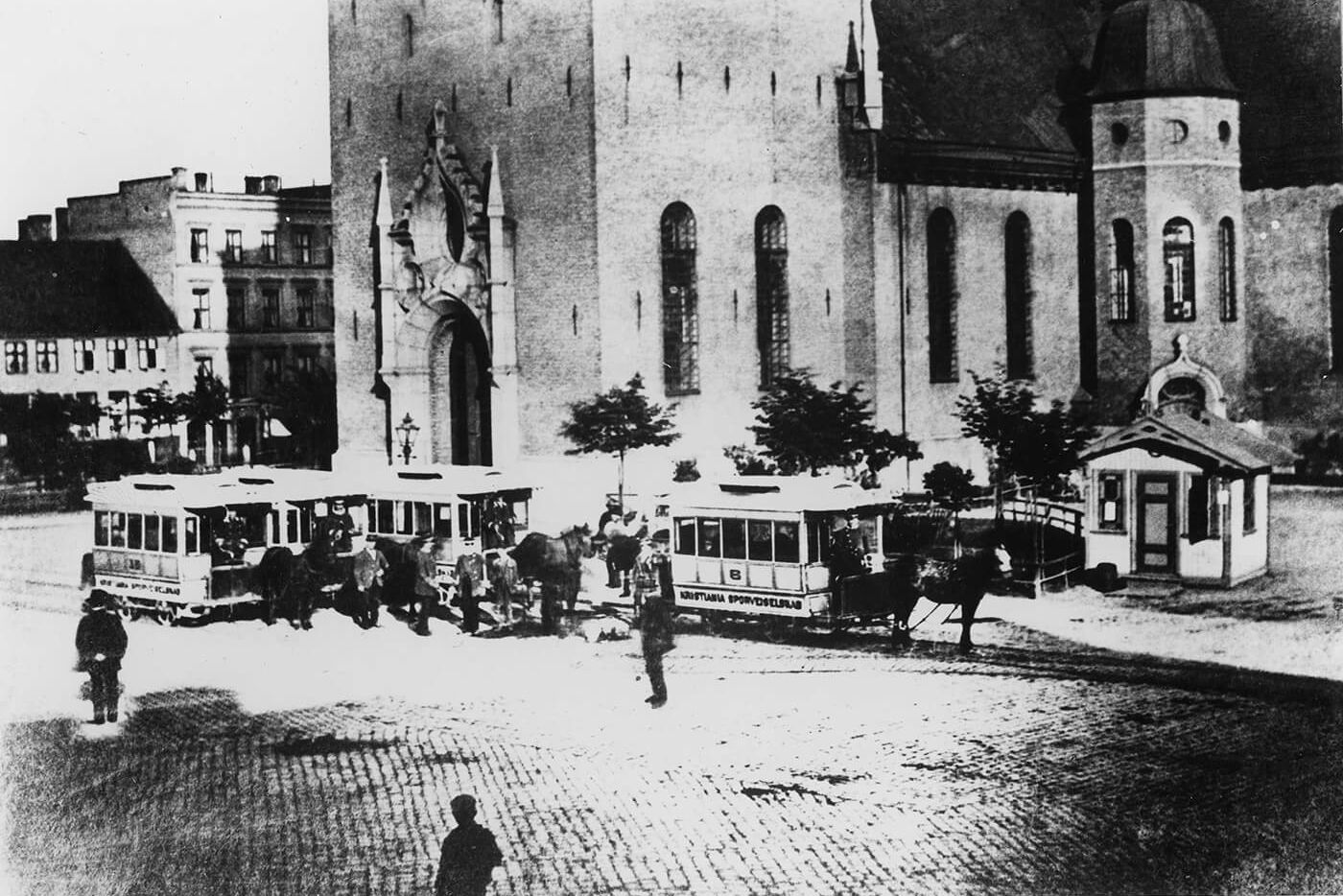
Horse-drawn trams on Stortorget in front of the cathedral, 1875.
Photo: Unknown / NTM

Horse-drawn tram on Karl Johan taken by Carl Størmer, 1890.
Photo: C. Størmer / NTM

The staff at Kristiania Sporvognselskap in Sporveisgata, 1880.
Photo: Unknown / NTM

Horse trams on Karl Johan, 1890.
Photo: O. Væring / NTM

The first electric tram from 1894 is today at The Norwegian Museum of Science and Technology .
Photo: Unknown / NTM

Tram on Karl Johan in front of the Storting, 1900.
Photo: O. Væring / NTM

Two of Kristianias Sporveisselskab's trams meet at Karl Johan, 1900.
Photo: O. Væring / NTM

Tram running across the Akerselva River with Ankertorget on the right, 1900.
Photo: O. Væring / NTM
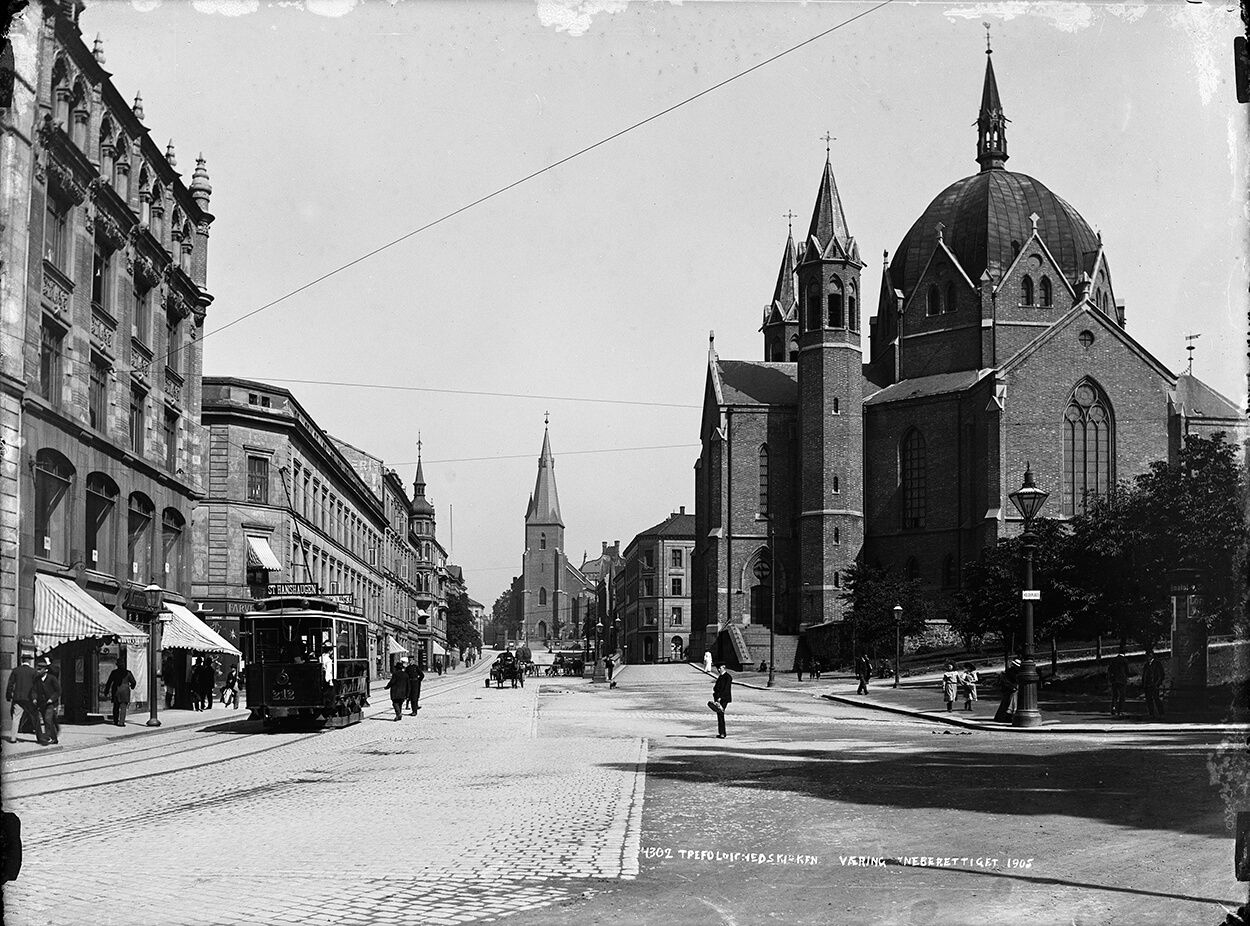
Tram on Akersgata by the Church of the Holy Trinity, 1905.
Photo: O. Væring / NTM

The Vålerenga tram at Stortorget, decorated for the celebration of June 7, 1945.
Photo: R. Strøm / NTM

A/S Christiania Electric Tramway workshop, Majorstuen, 1900.
Photo: Unknown / NTM

Kristiania Sporvei and Holmenkollbanen shared workshops, 1900.
Photo: Unknown / NTM
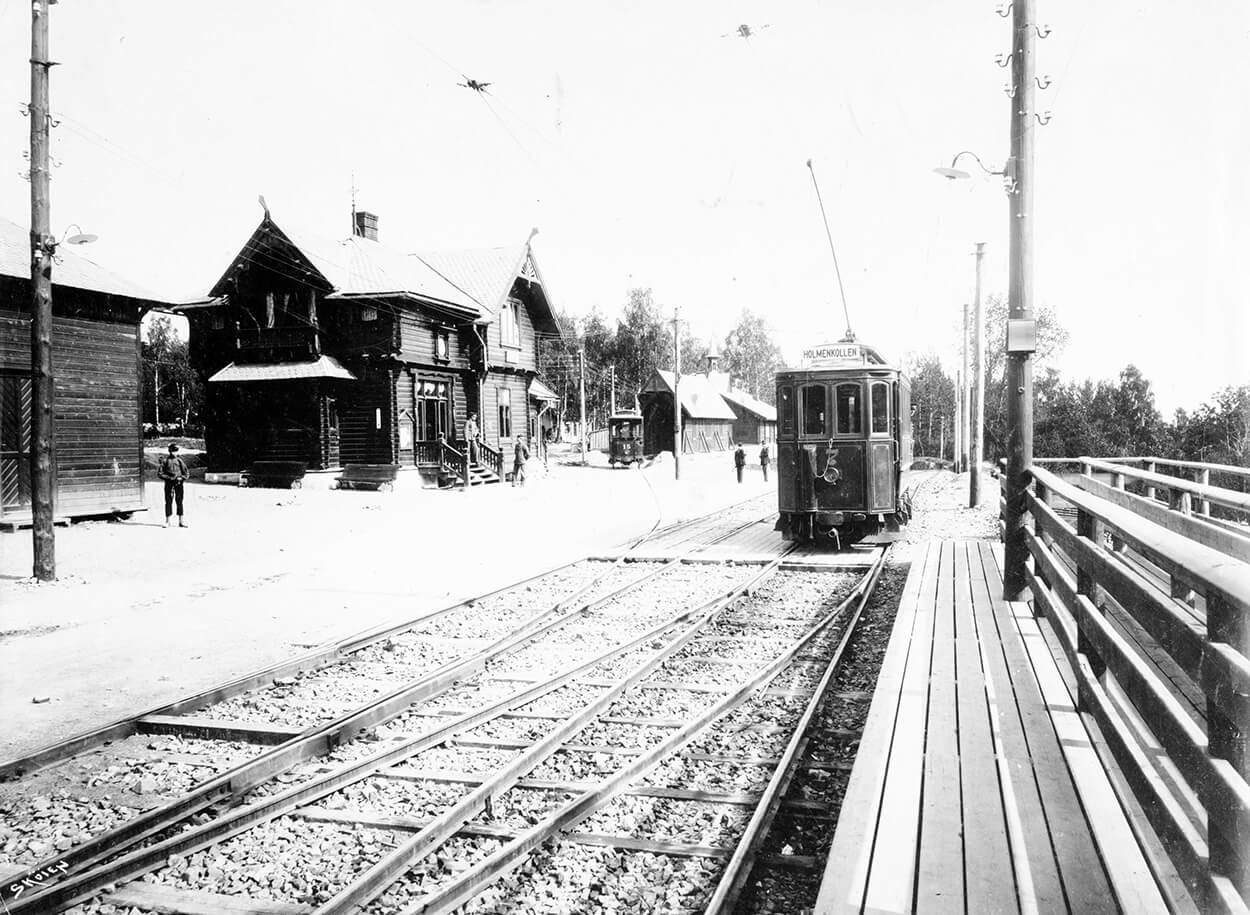
The Holmenkolbanen with motor car no. 7, Slemdal station, 1900.
Photo: Unknown / NTM

Bus 1927 model celebrating Oslo Sporveier's 60th anniversary, 1935.
Photo: Unknown / NTM

One of the first buses for Oslo Sporveier, registration number A-130, 1932.
Photo: Unknown / NTM
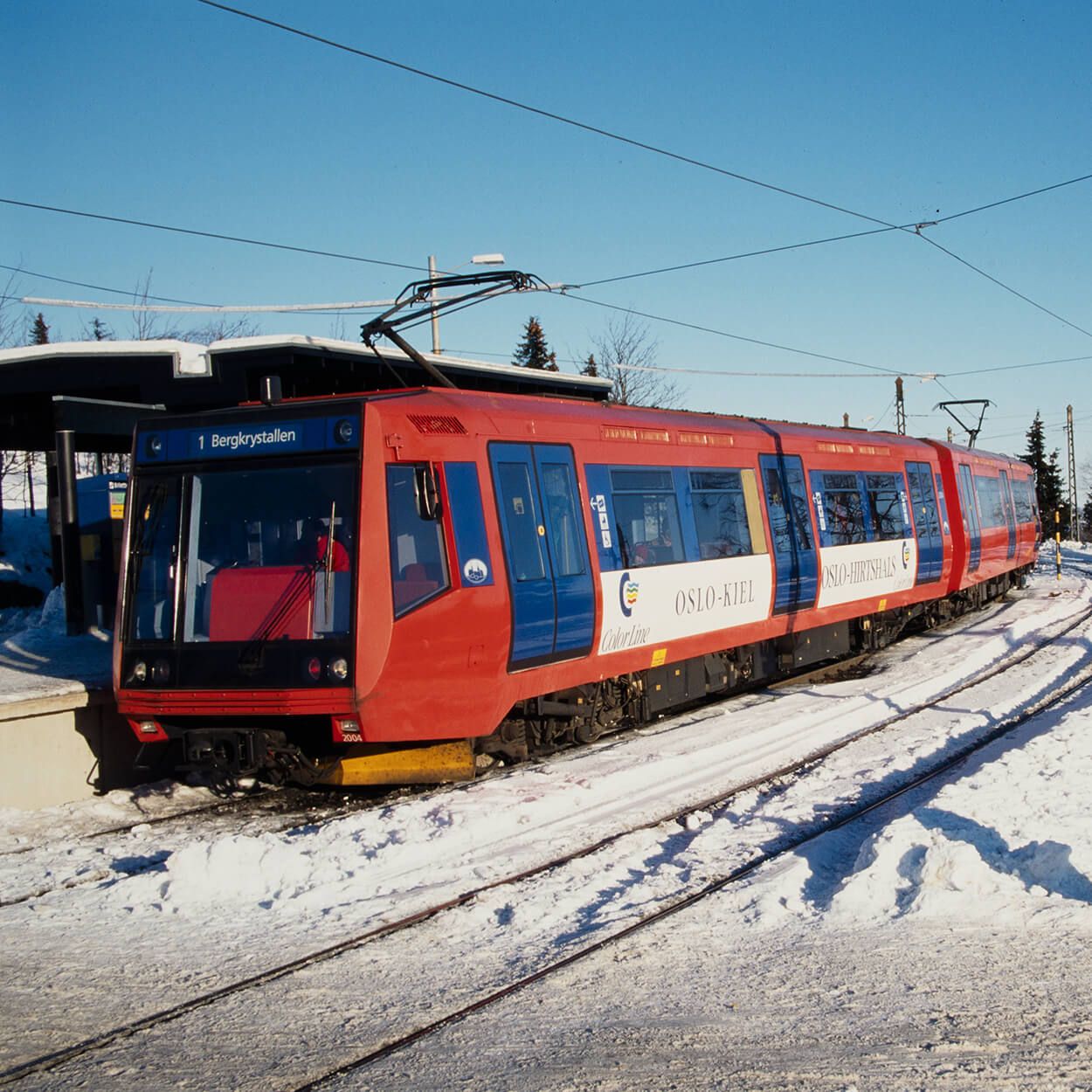
The last Norwegian-built wagon was the T-2000 from 1995.
Photo: Knudsens / Dextra

The first horse-drawn tram in the jubilee parade in 1994.
Photo: P. Røstad / Dextra

The tram's 100th anniversary, 1994. This tram is today The Norwegian Museum of Science and Technology .
Photo: P. Røstad / Dextra

Anniversary parade in 1994. Tram no. 6 is today at the Tram Museum.
Photo: P. Røstad / Dextra

Bus stops in front of the City Hall Hotel, 1930s.
Photo: Knudsens / Dextra

Trolleybus, an electric bus with a catenary, 1944.
Photo: Unknown / NTM

Stortinget Metro Station.
Photo: Teigens / Dextra

A/S Oslo Sporveier's freight route during World War II, 1940-45.
Photo: Unknown / NTM

The Parliament building seen from Stortingsgata and Tollbugata.
Photo: Unknown / NTM
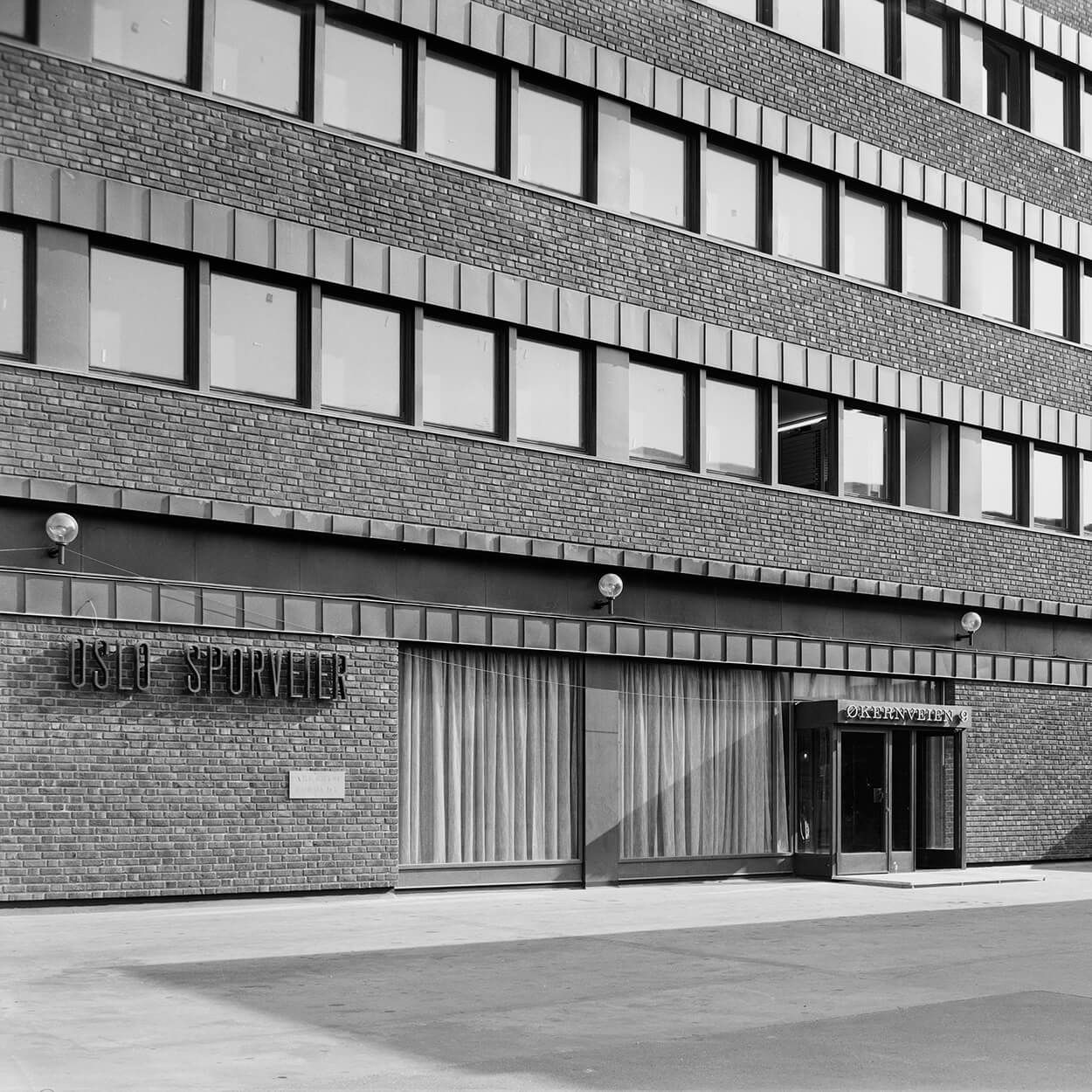
Oslo Sporveier's head office in Tøyen.
Photo: Teigens / Dextra

Model on a shoot for a clothing advertisement, Majorstuen tram stop, 1970.
Photo: Sohlberg / Dextra

The reconstruction of Hovseter station on the Østerås line, 1995.
Photo: Teigens / Dextra

Subway bridge and tunnel under construction, 1995.
Photo: Teigens / Dextra
K POINT
Public transport connects Oslo. It started with horse-drawn trams from Stortorget to Gamlebyen and Homansbyen, before electric trams took over in 1894 from Jernbanetorget to Majorstuen. The Holmenkoll Line opened in 1898, the Sinsentricken in the 1930s, and the metro reached Lambertseter and Grorud in the 1960s. The Fornebu Line will soon open, further strengthening the network. Between the trams, the metro and the metros there is an extensive bus network, with the 20 bus from Skøyen to Galgeberg being one of the most well-known lines.
The Oslo Fjord connected the surrounding areas before road transport took over. Today, thousands of people still use ferries from Nesodden and Asker for work or leisure, whether it is culture or nature that beckons.
Some important hubs in the city are the Nationaltheatret, Oslo S, Majorstuen and Carl Berner, while former central locations such as Rådhusplassen and Grønland still function as meeting points for buses, trams, railways, trains and boats.
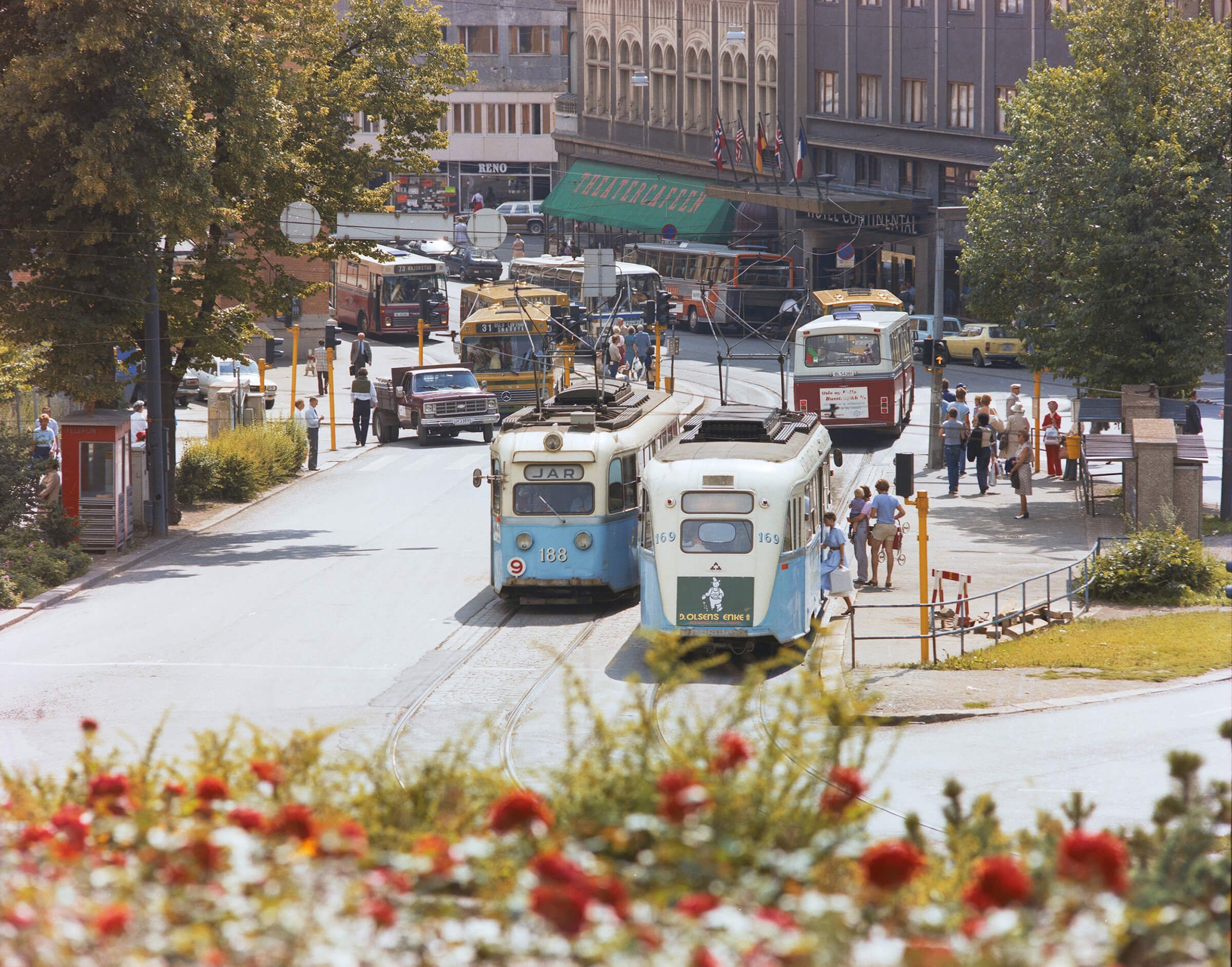
Two "Goldfish", the model was in operation from 1937 to 1985.
Photo: Knudsens / Dextra

The stairs to Østbanehallen, renamed Oslo S, 1980.
Photo: Knudsens / Dextra

Majorstu intersection is still an important hub on the West Coast, 1955.
Photo: Knudsens / Dextra
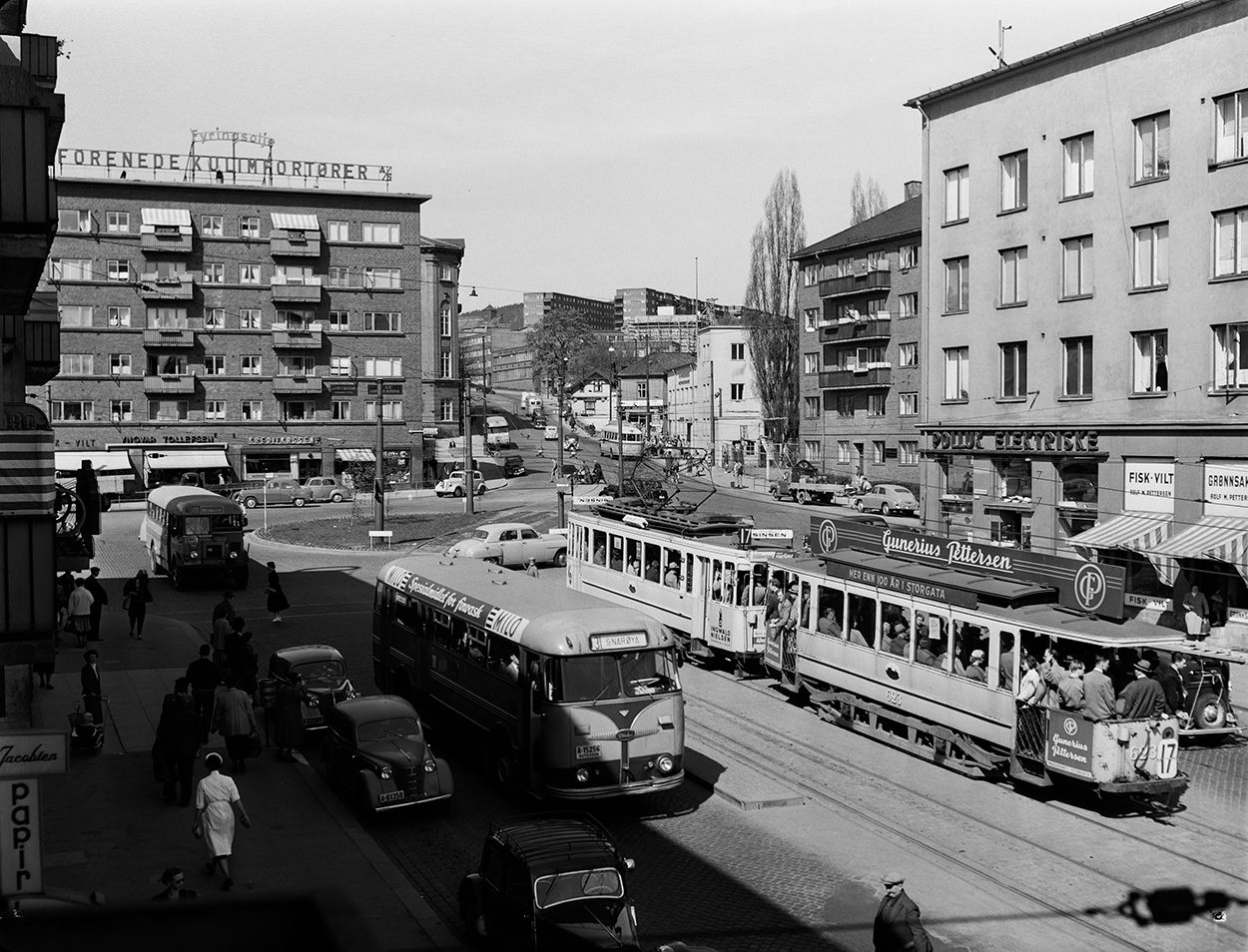
Carl Berners Plass is one of the important hubs on the eastern edge, 1960.
Photo: Knudsens / Dextra
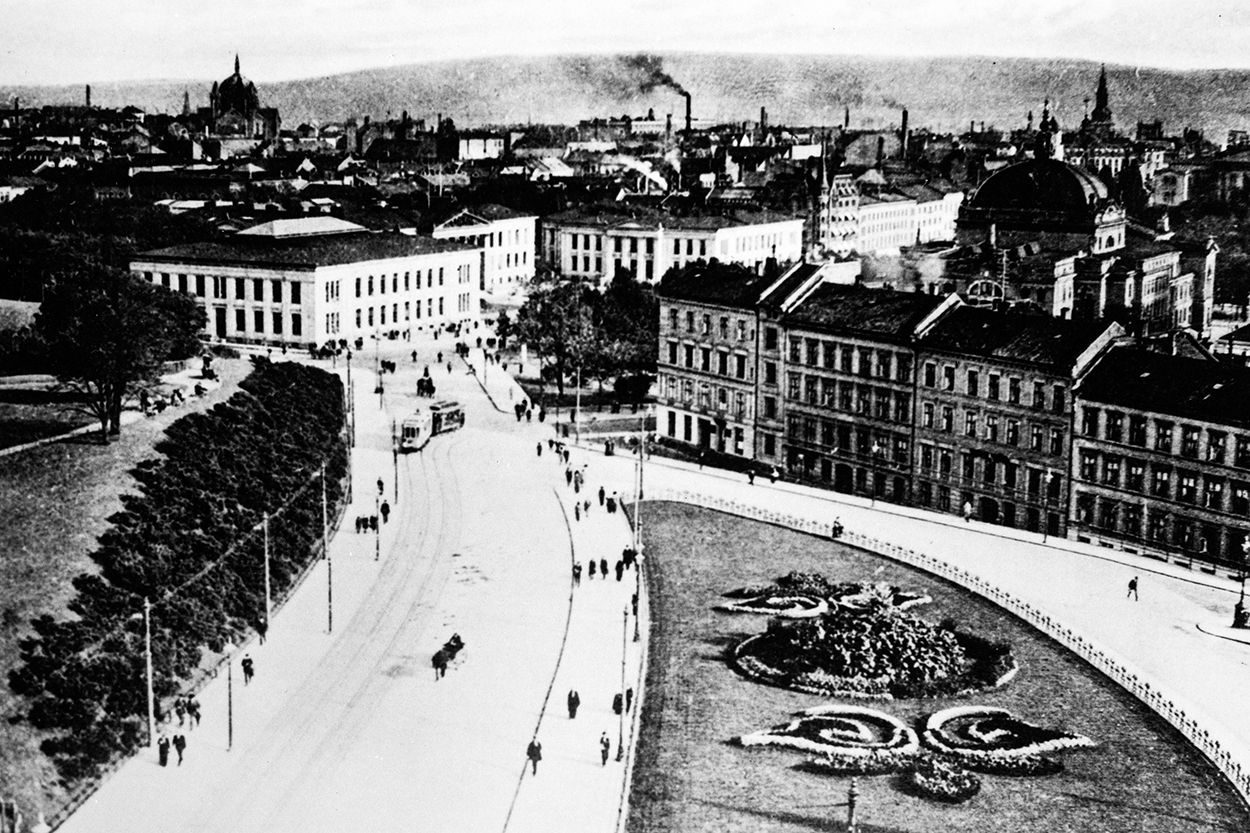
Tram heading up Drammensveien from the National Theatre, 1900.
Photo: Knudsens / Dextra

View from Abelhaugen to the National Theater on a winter day, 1985.
Photo: Knudsens / Dextra
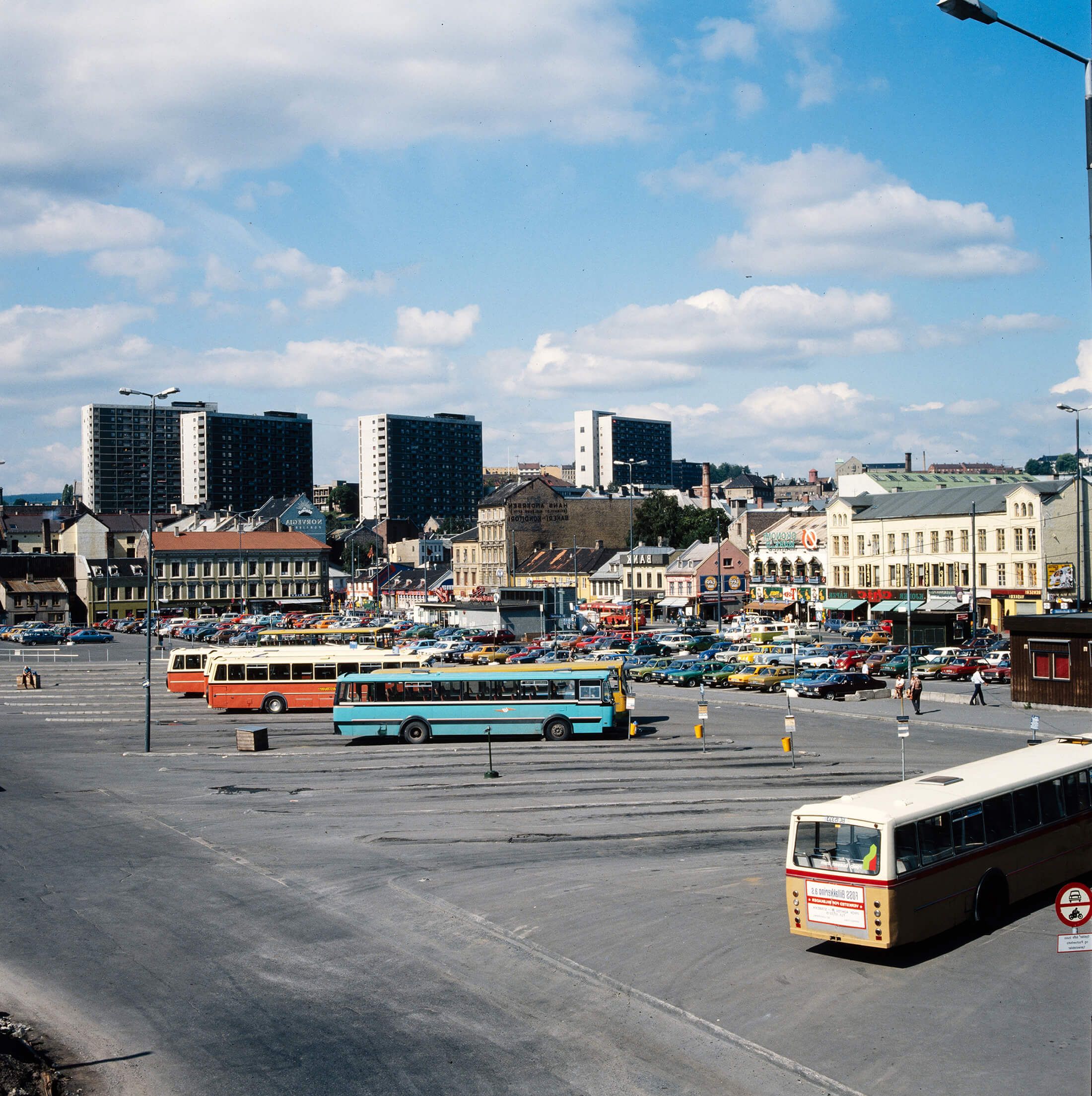
The bus terminal in Greenland, 1975.
Photo: Knudsens / Dextra

Buses at City Hall Square, 1970.
Photo: Knudsens / Dextra
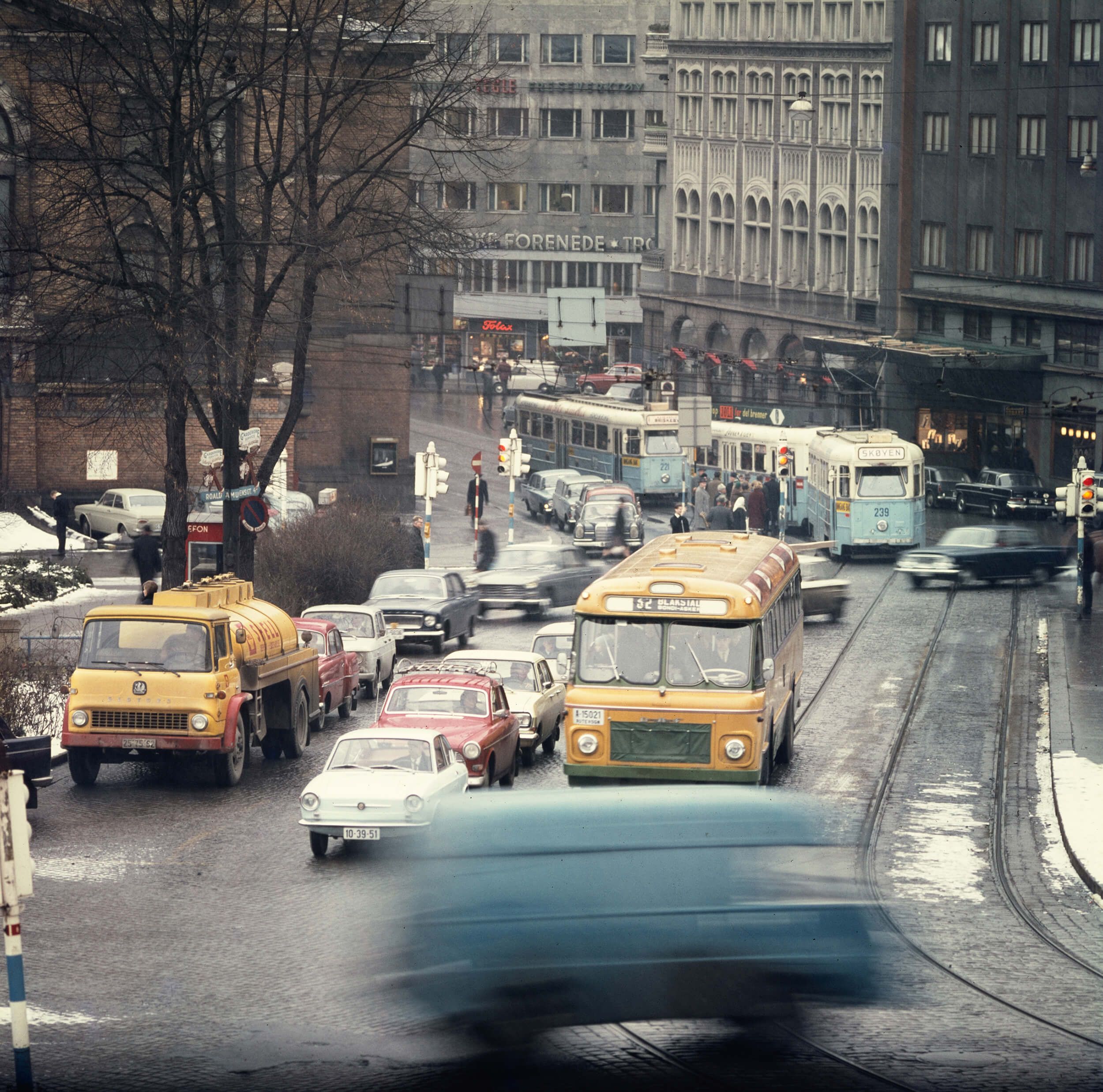
The National Theater on a winter day, 1970.
Photo: Knudsens / Dextra

Rush hour at the National Theater, 1976.
Photo: P. Røstad / Dextra

Tram 249, a Høka tram from 1958 in 1990.
Photo: Knudsens / Dextra

Queue in Rådhusgata on the way to Rådhusplassen, 1969.
Photo: P. Røstad / Dextra

Traffic at the National Theatre, 1976.
Photo: P. Røstad / Dextra
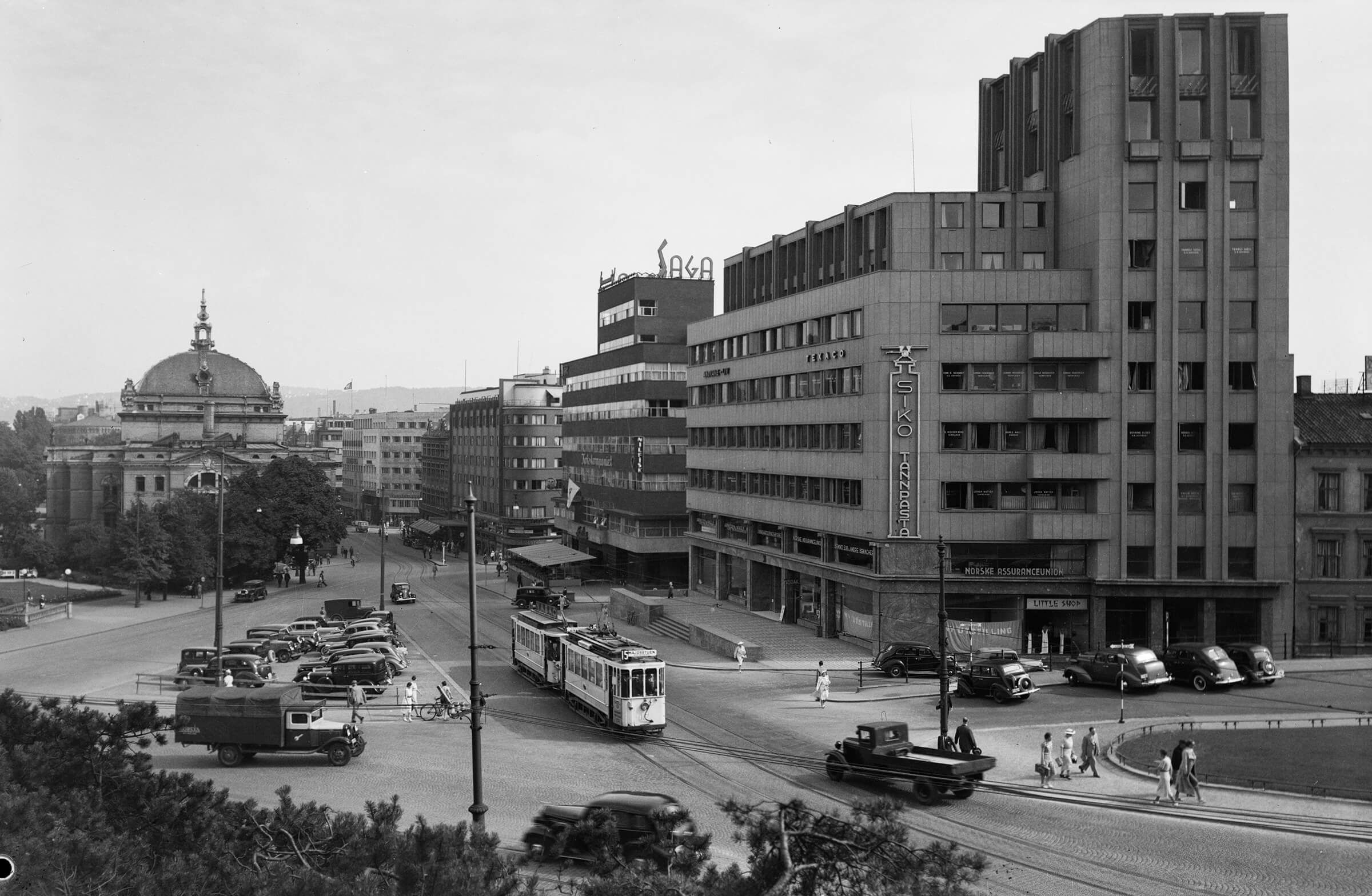
Tram by the National Theater on its way up Drammensveien, 1940.
Photo: Teigens / Dextra

The National Theatre facing Stortingsgata, 1968.
Photo: P. Røstad / Dextra

The sea side of the Eastern Railway with Oslo S under construction, 1978.
Photo: P. Røstad / Dextra

Vika with the Nesodd ferries and the Vestbanen railway, 1980.
Photo: P. Røstad / Dextra

Oslo S, 1984.
Photo: P. Røstad / Dextra

Bus at the Eastern Railway, 1940.
Photo: Teigens / Dextra

Karl Johan, 1980.
Photo: P. Røstad / Dextra

Tram 121 at the Majorstu intersection in 1994. The carriage was named "Grenoble".
Photo: Unknown / NTM

Majorstu intersection, 1970.
Photo: Teigens / Dextra

The tram track was laid under the Sinsen intersection in 1991.
Photo: Teigens / Dextra

Stortorget with the Vålerenga tram, 1945.
Photo: R. Strøm / NTM

View of Jernbanetorget, 1955.
Photo: O. Væring / NTM

View of Jernbanetorget, 1955.
Photo: O. Væring / NTM

The "Trafikanten" information center at Oslo Central Station, 1988.
Photo: Teigens / Dextra
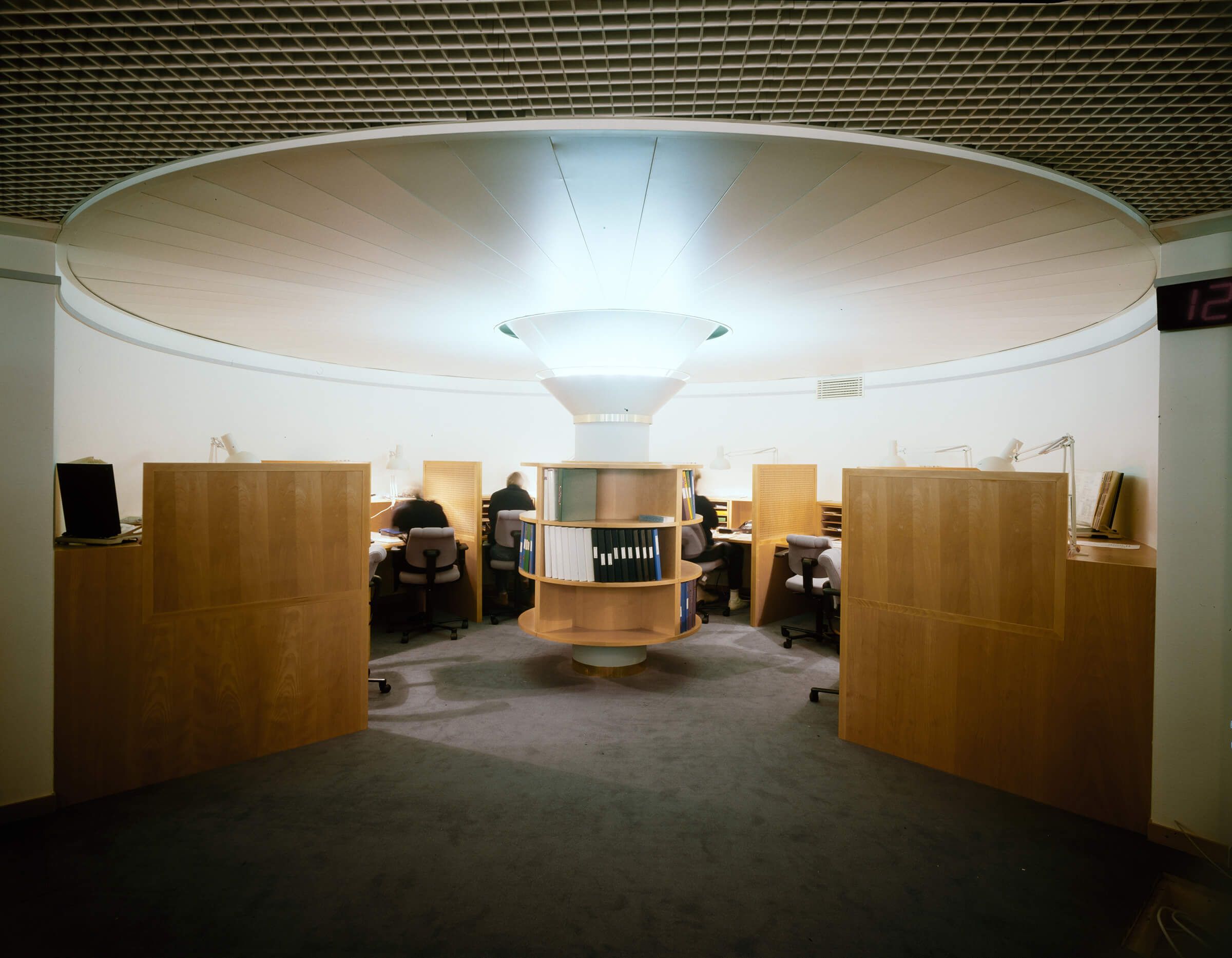
The "Trafikanten" information center at Oslo Central Station, 1988.
Photo: Teigens / Dextra

Travelers wait for public transportation at Oslo S.
Photo: Unknown / NTM
T RICK
Here are some “portraits” of the workhorses of Oslo traffic – the rail-based trams that have characterized the cityscape for many decades. Now a new generation is coming, and the last Norwegian-built trams, SL 79, are being phased out. Fortunately, many veterans are preserved at the Tram Museum and at the Local Traffic History Association.
Previously, trams were mainly built in and around Oslo. The Skøyen factories Skabo, Thune and NEBB collaborated on several classic carriages. Skabo delivered both the first Norwegian-built horse-drawn trams and in 1895, together with Norsk Elektriks, the first electric tram. Thune produced locomotives and motor cars for local trains in collaboration with NEBB/Skabo, and was later merged with Strømmens Værksted. Other bodywork factories, such as at Hønefoss, also delivered many buses, trams and local trains, and helped build up Oslo's public transport over several generations.

Tram 112, type SL79, at Stortorget on a summer day, 1990.
Photo: Knudsens / Dextra

Tram on Stortingsgata, 1985.
Photo: Knudsens / Dextra

A/S Kristiania Sporveisselskab: Green tram, motor car no. 26, 1919.
Photo: Unknown / NTM

The blue tram on its way to Majorstuen. Trailer no. 155 is a Bautzen from 1899.
Photo: O. Væring / NTM

The Blue Tram, motor car no. 195, from Skabo-Siemens, 1912.
Photo: Unknown / NTM

The blue tram with trailer car no 361 made of two small trailers from 1894.
Photo: Unknown / NTM

Motor car no. 159, from Strømmens Verksted Vicke, 1937.
Photo: Unknown / NTM

The Green Tram, trailer car no. 90 with open summer carriage, Skabo 1910.
Photo: Unknown / NTM

Tram car no. 76 with advertising by Alf Bjercke Malingfabrikk.
Photo: Teigens / Dextra

Motor car no. 37 with rail grinding car trailer no. 311, built 1935.
Photo: Unknown / NTM
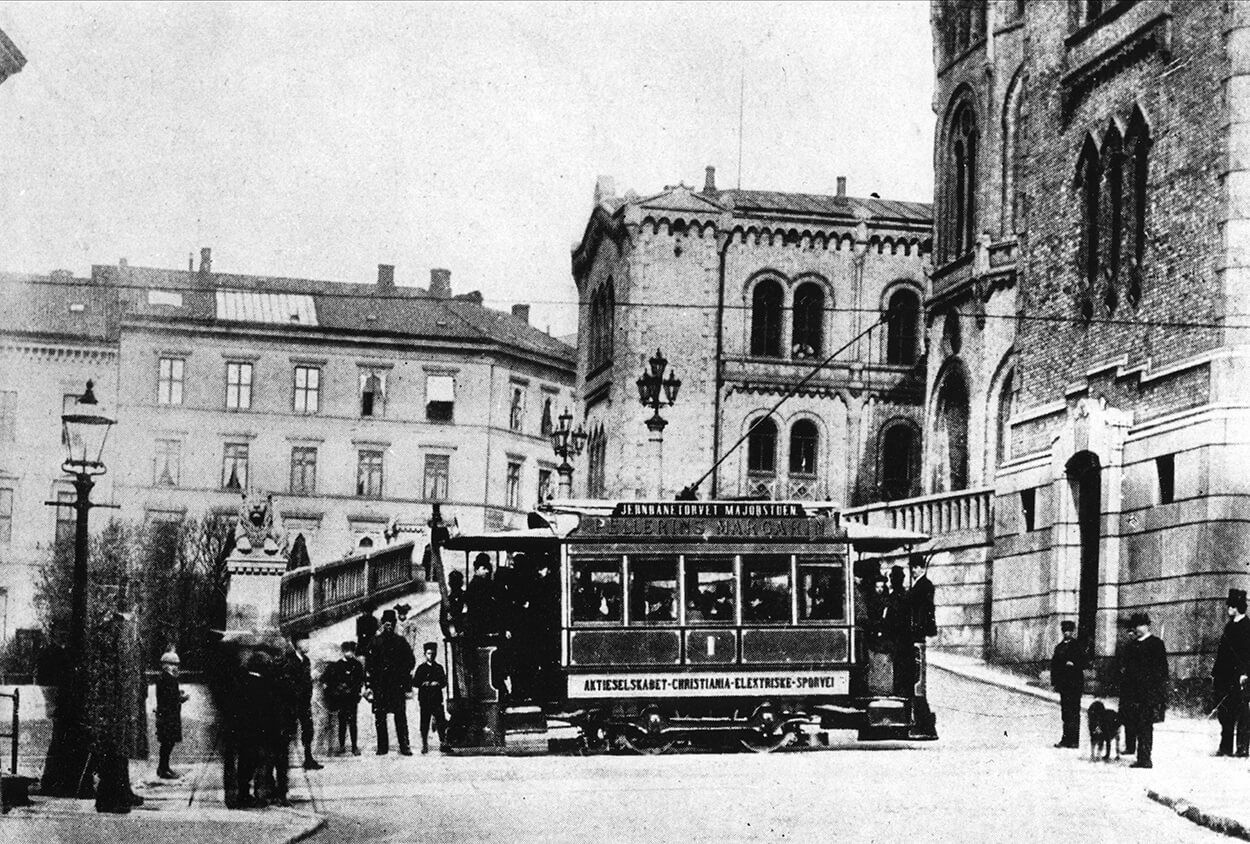
Tram heading up Drammensveien at Slottsparken, 1930.
Photo: O. Væring / NTM
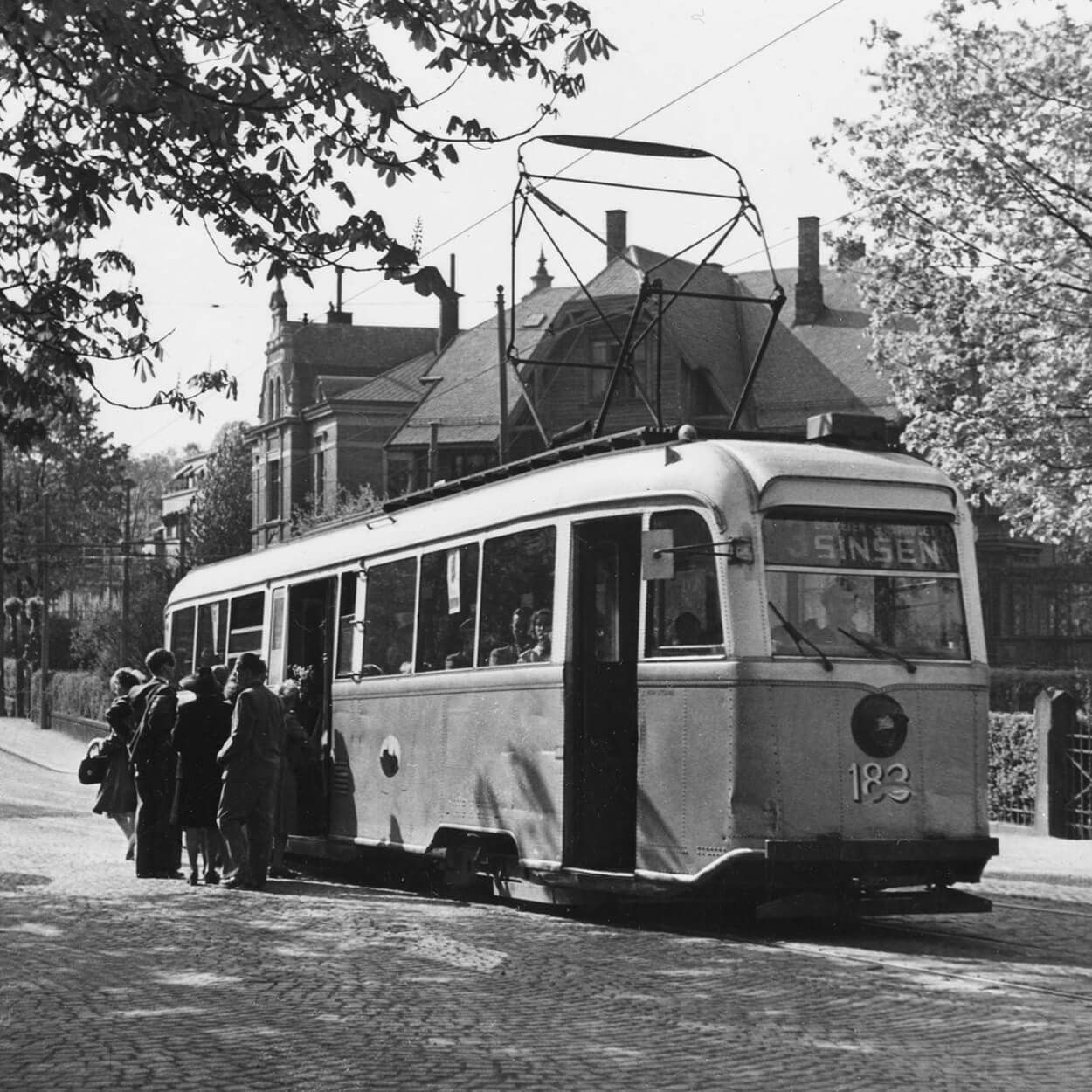
Skillebekk depot with wagon 183 from Skabo/AEG, 1939.
Photo: Unknown / NTM

Tram 240 to Skøyen by the National Theatre
Photo: Knudsens / Dextra
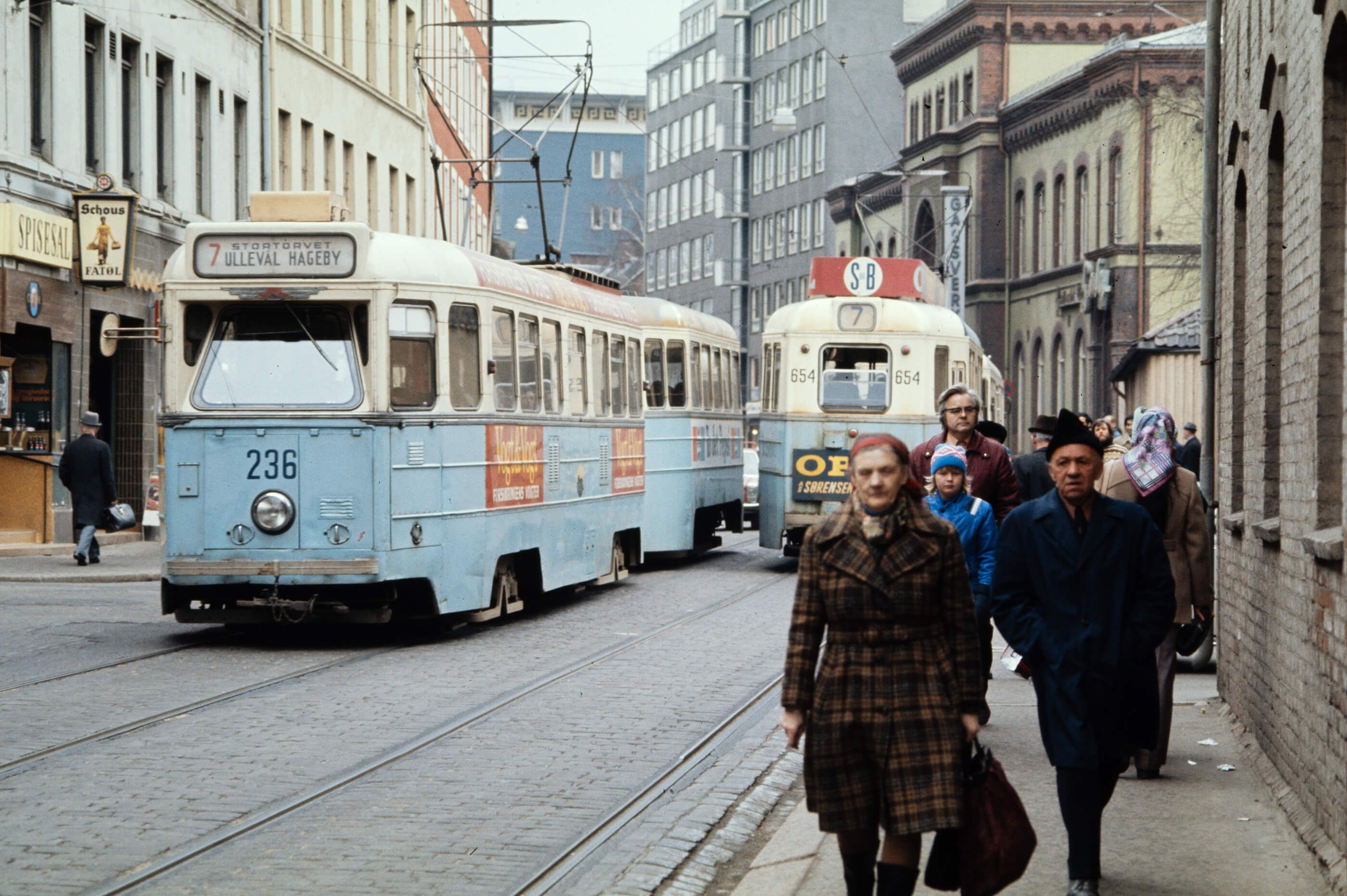
Goldfish on their way to Ullevål Hageby.
Photo: Knudsens / Dextra

The tram depot at Holtet was the Ekeberg Line's base from 1942.
Photo: Knudsens / Dextra

Motor car 242 type Høka MBO at the National Theatre, 1985.
Photo: Knudsens / Dextra

Trams in Stortingsgata, 1985.
Photo: Knudsens / Dextra

Høka tram from Hønefoss Bodywork Factory at Tullinløkka, 1985.
Photo: Knudsens / Dextra

Therese's Street, 1980.
Photo: P. Røstad / Dextra

Tram in the colors of the Ekeberg Line, at Slottsparken, 1970.
Photo: Knudsens / Dextra

Tram 116 on Bogstadveien, 1985.
Photo: Knudsens / Dextra

Tram 118, type SL79, at Stortorget around 1985
Photo: Knudsens / Dextra

Tram 118, type SL79, at the SAS hotel at Holbergs Plass, 1985.
Photo: Knudsens / Dextra

Tram 102, type SL79, in Grensen on its way to Adamstuen, 1985.
Photo: Knudsens / Dextra

Goldfish on their way to Frgoner on a summer day.
Photo: Knudsens / Dextra

Tram 123, type SL79, heading down Bogstadveien, 1990.
Photo: Knudsens / Dextra

Tram at Jernbanetorget.
Photo: P. Røstad / Dextra
B USS
Bus lines have connected Oslo's rail network since the 1920s, with cross-section lines and ring roads. The bus is still crucial for reaching people where they live.
It started in 1927 with ten purchased buses on the route from Alexander Kiellands Plass to Kværner – a typical work route. New lines came quickly, especially across the tram lines, to fill the gaps between the tracks. The popular ring buses, including today's classics 20 and 21 buses, became important lifelines through the city.
Oslo was also among the first cities in the world to use self-supporting light-alloy buses, built at Strømmens Værksted. This contributed to both the modernization and efficiency of public transport, and laid the foundation for a flexible bus network that still plays a key role in the city's transport network.

Articulated bus that was built in Vestfold, and was in operation from 1981 to the 1990s.
Photo: Knudsens / Dextra

Bus from MO Schøyens Bilcentraler in Drammensveien in 1980.
Photo: Knudsens / Dextra

The Lysaker bus in Bygdøy Allé, 1965.
Photo: P. Røstad / Dextra
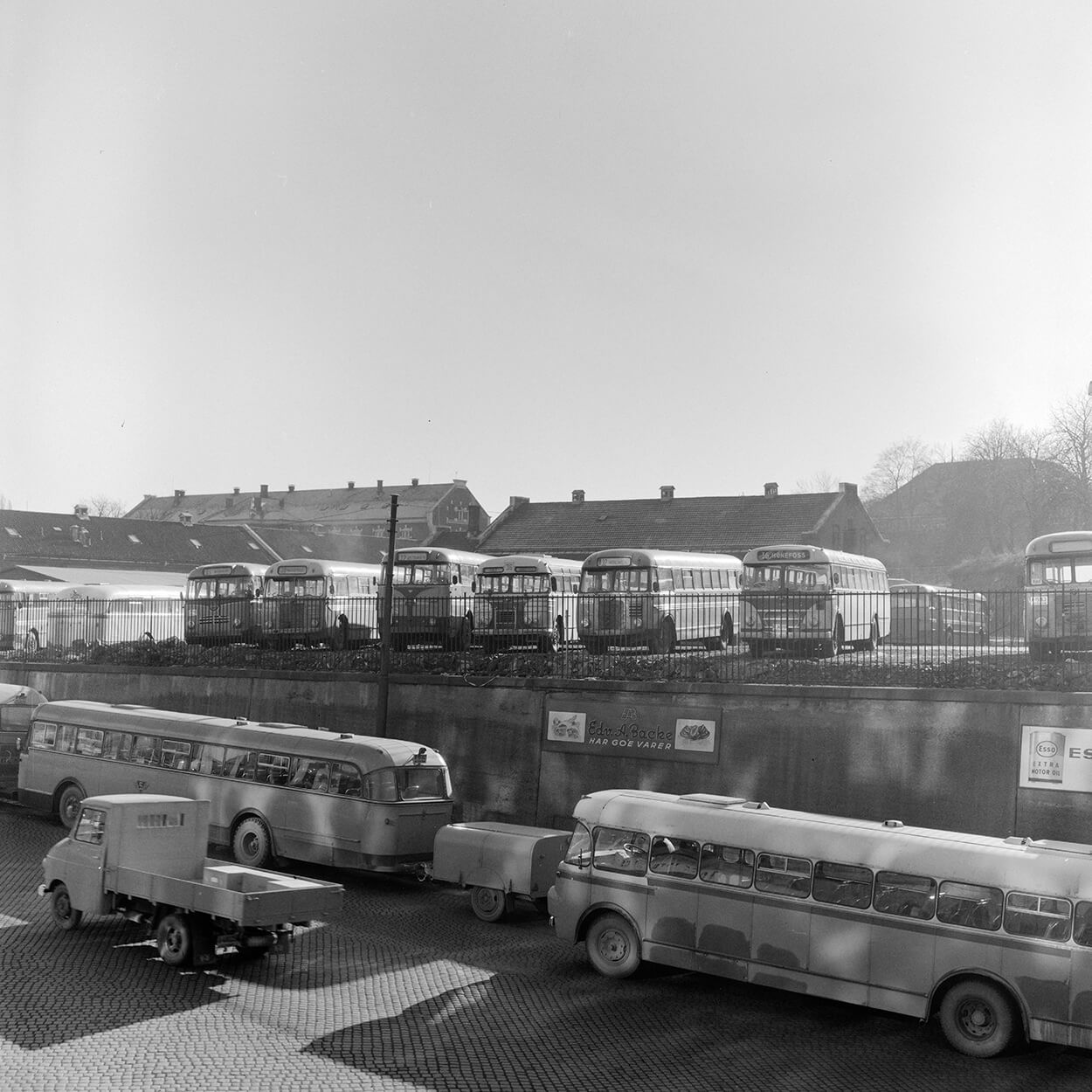
Bus line-up at Kontraskjæret, 1970.
Photo: Knudsens / Dextra

MO Schøyens Bilcentraler's yellow buses drove to Greenland.
Photo: Knudsens / Dextra

Bus 909 from 1975 at Jernbanetorget, 1980.
Photo: Unknown / NTM

Buses in Stortingsgata.
Photo: Unknown / NTM

Follobuss 79 in 1990. Kodak's head office and lab were also located at Mastemyr.
Photo: Unknown / NTM

MO Schøyens Bilcentraler was active in and around Oslo until the year 2000.
Photo: Unknown / NTM
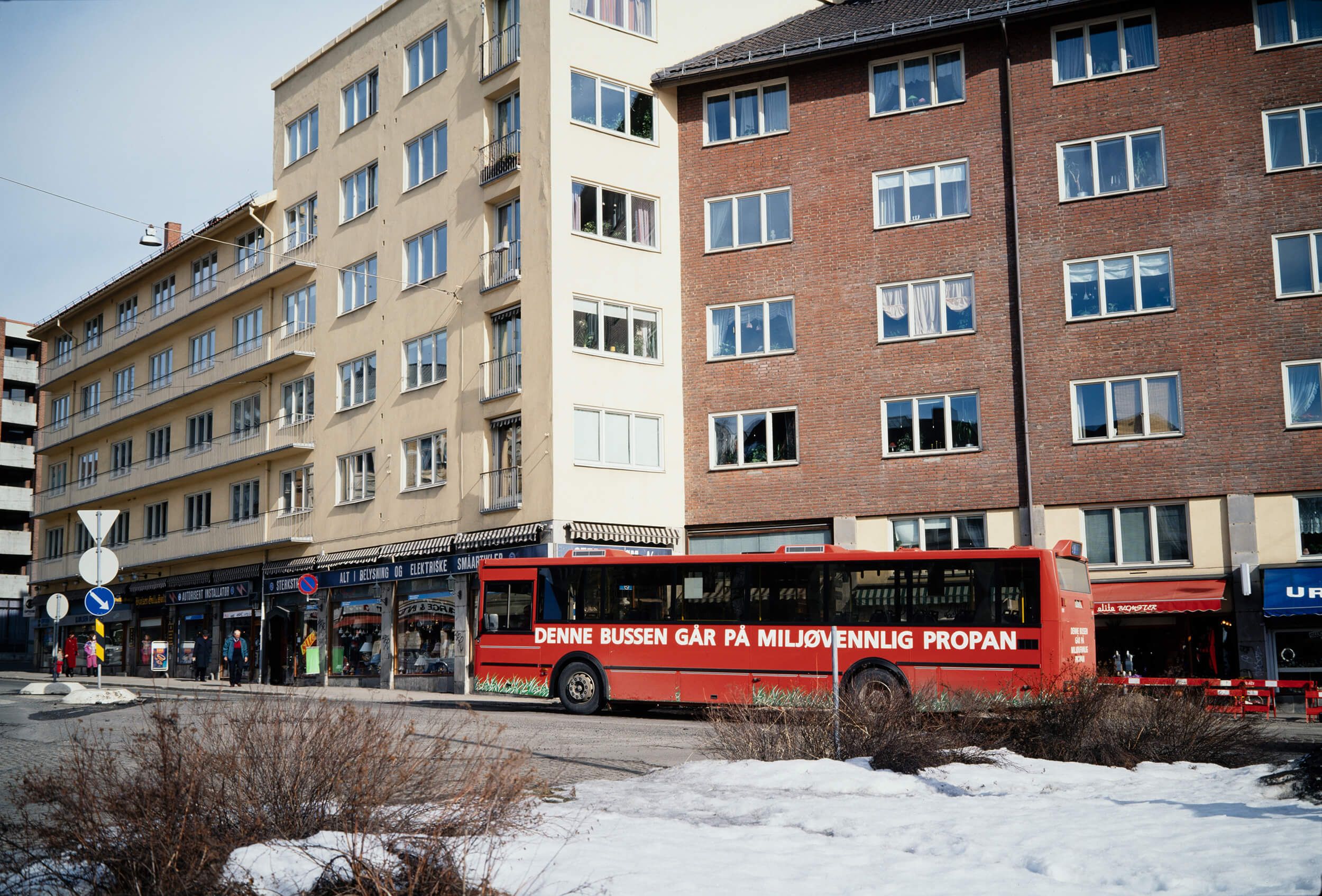
The tramway's first gas-powered bus at Adv. Dehlis Plass, 1991.
Photo: Unknown / NTM

Sporveien had its first bus powered by propane in 1991.
Photo: Unknown / NTM

The Rykkin bus from Schøyens Bilcentraler in Bygdøy Allé, 1981.
Photo: P. Røstad / Dextra
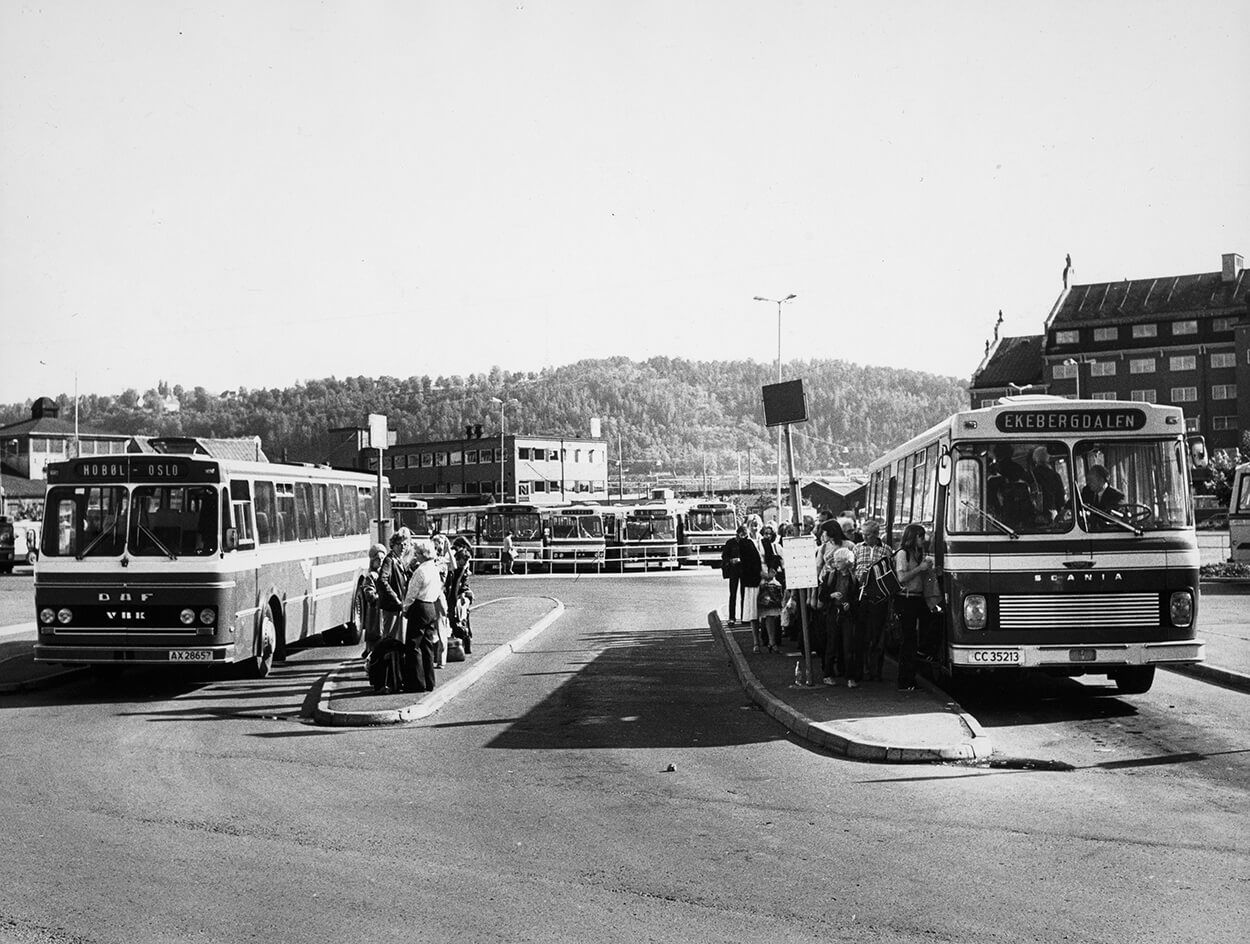
Greenland bus terminal, 1979.
Photo: P. Røstad / Dextra

Strømmens Værksted built 30 aluminum buses in 1936-37.
Photo: Unknown / NTM

Self-driving buses were tested in an early version with "Oda" in 2020.
Photo: D. Andreassen / NTM
RAILWAY & BOAT
The first suburban railway, the Holmenkollbanen in 1898, gave people access to fresh air and exercise in nature – summer and winter. Financing came from selling plots of land along the tram line for large villas. This model extended tram tracks to Ekeberg, Grefsen, Lilleaker and far out into Bærum, and gave the city new districts to accommodate more residents.
After World War II, development continued with shanty towns. The Oslo municipality and the tram company extended the metro from the city center to Lambertseter, towards Østmarka and Skullerud, and on both sides of the Groruddalen to Romsås and Ellingsrud.
After 1995, east and west were connected in a single metro network with the same technical standard and rail power. Soon, the network will get its new extension to Fornebu, further strengthening Oslo's connected public transport system and facilitating the city's continued growth.

Makrellbekken station on the Østerås Line, 1995.
Photo: Knudsens / Dextra

The tram track was laid under the Sinsenkrysset intersection, 1991.
Photo: Knudsens / Dextra
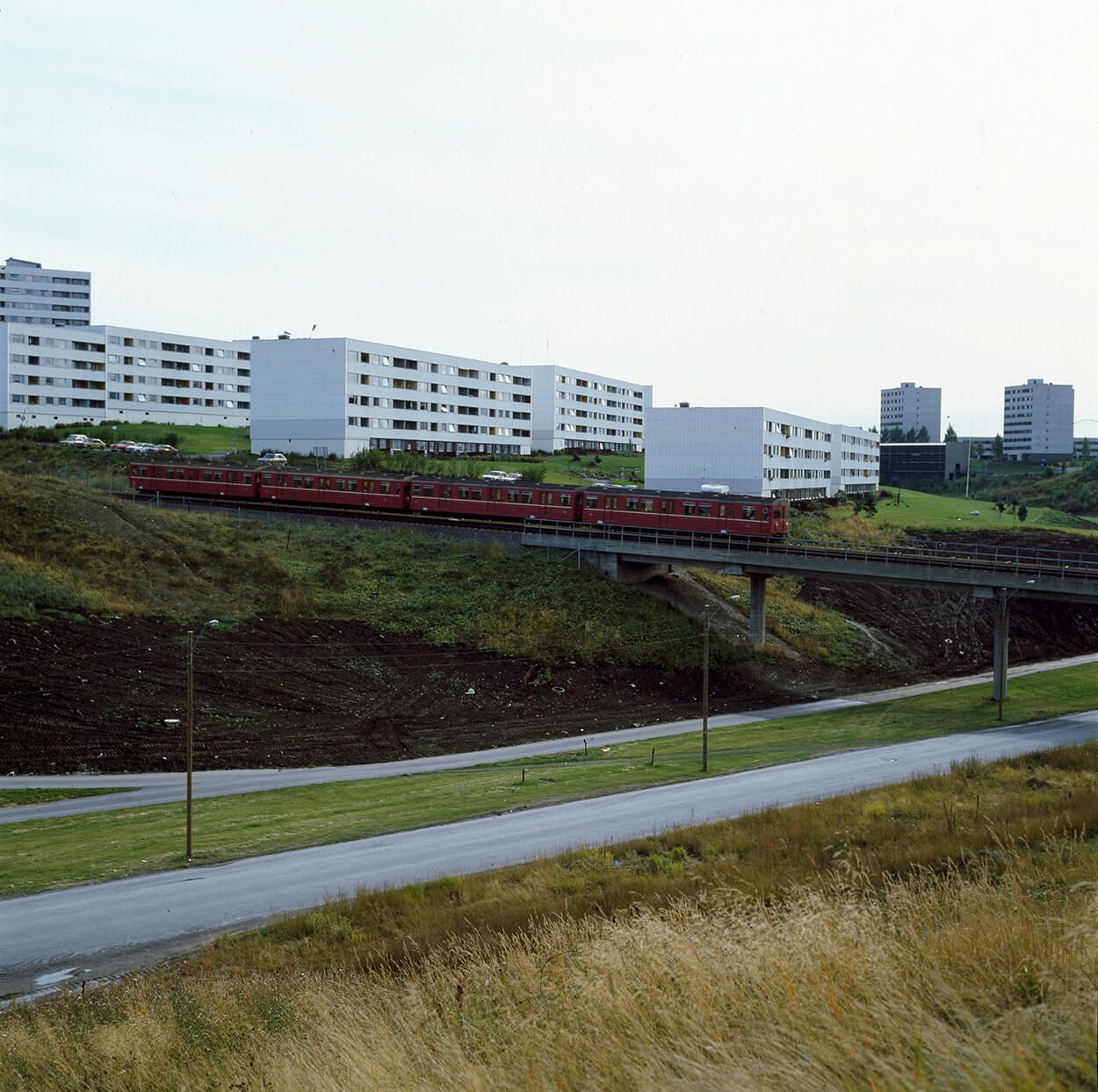
The subway passes apartment buildings on Stover, 1982.
Photo: P. Røstad / Dextra

Grønland Metro Station, designed by Peer Quam, opened in 1966.
Photo: Teigens / Dextra

View towards Kjelsåstricken at Disen.
Photo: Teigens / Dextra

From the tram loop at Oppsal, Østensjøbanen.
Photo: P. Røstad / Dextra

The Ekeberg Line at the Naval Academy.
Photo: P. Røstad / Dextra

Skabo carriage at Majorstuen station, 1973.
Photo: Unknown / Dextra

Jernbanetorget metro station was the terminus for the suburban railways.
Photo: O. Væring

Brynseng, 1966.
Photo: P. Røstad / Dextra

Manglerud Metro Station, 1969.
Photo: P. Røstad / Dextra
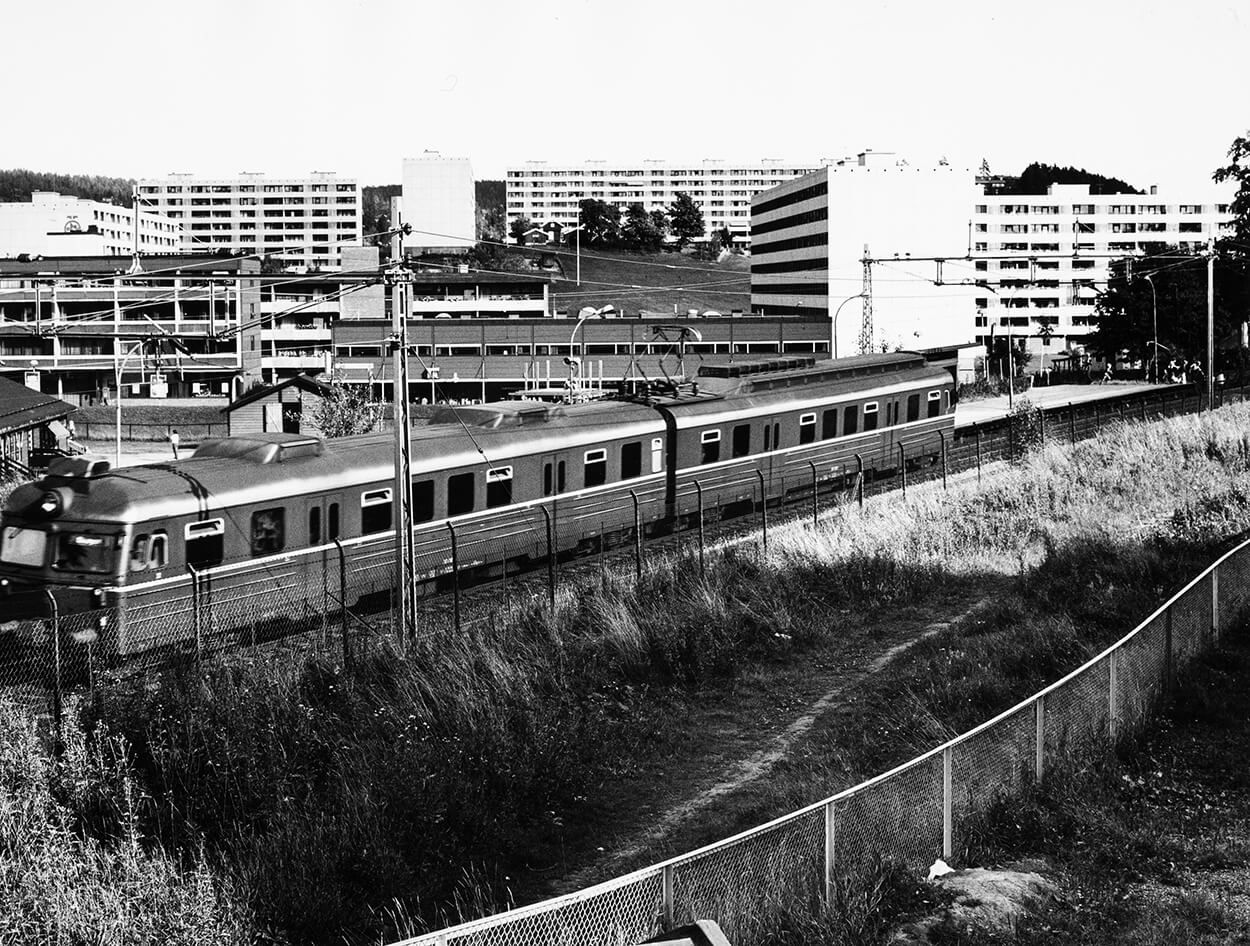
Local train at Haugenstua, 1982.
Photo: P. Røstad / Dextra

Subway at Stovner, 1982.
Photo: P. Røstad / Dextra

ET track at Trosterud, 1982.
Photo: P. Røstad / Dextra
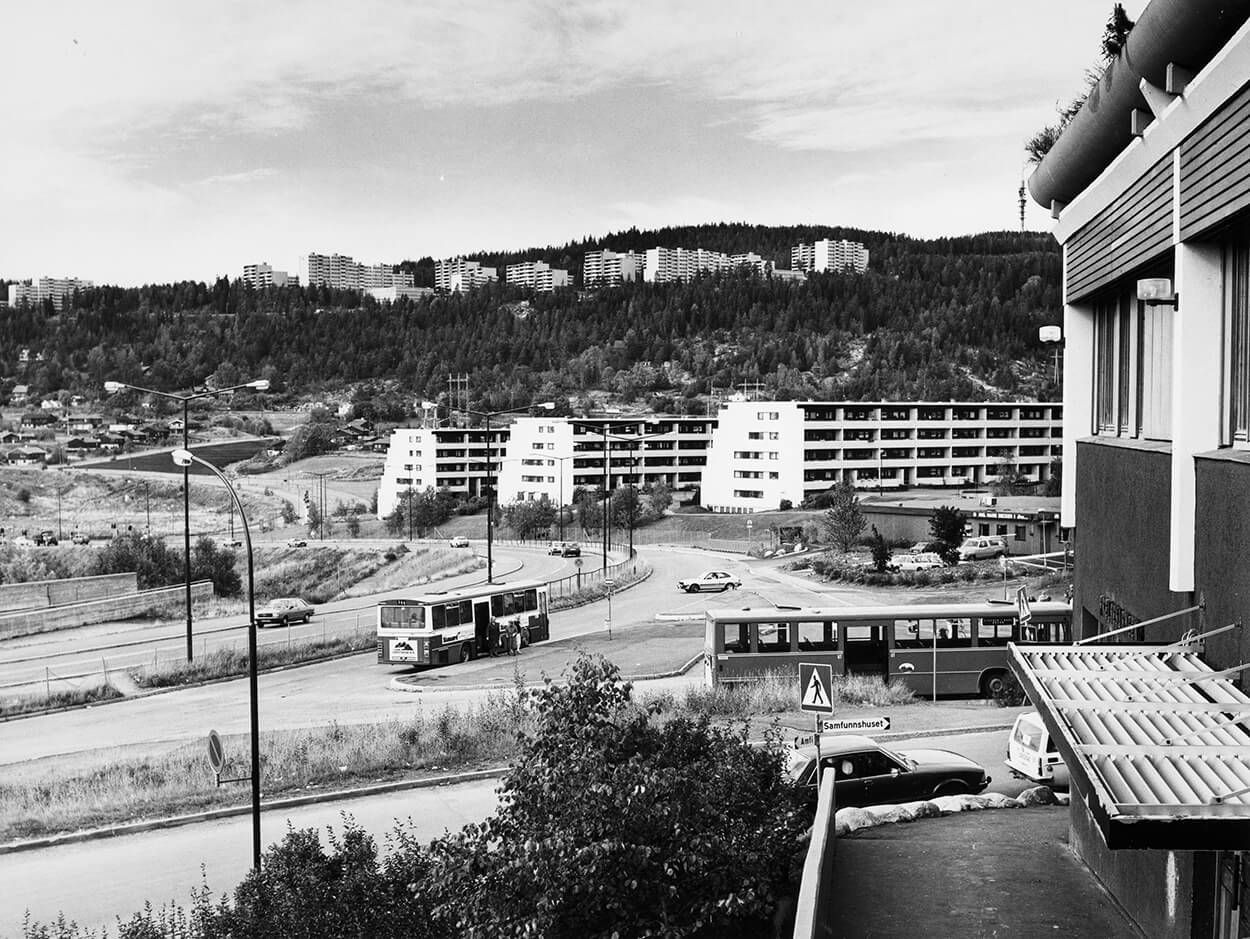
From Stovner towards Romsås, 1982.
Photo: P. Røstad / Dextra

The teak veteran at Holmenkollbanen was produced for the 1952 Olympics.
Photo: Knudsens / Dextra

Motor vehicle under construction at Thunes Mechanical Workshop, 1960.
Photo: Knudsens / Dextra

Sentrum station opened in 1977 and was named Stortinget station in 1987.
Photo: P. Røstad / Dextra
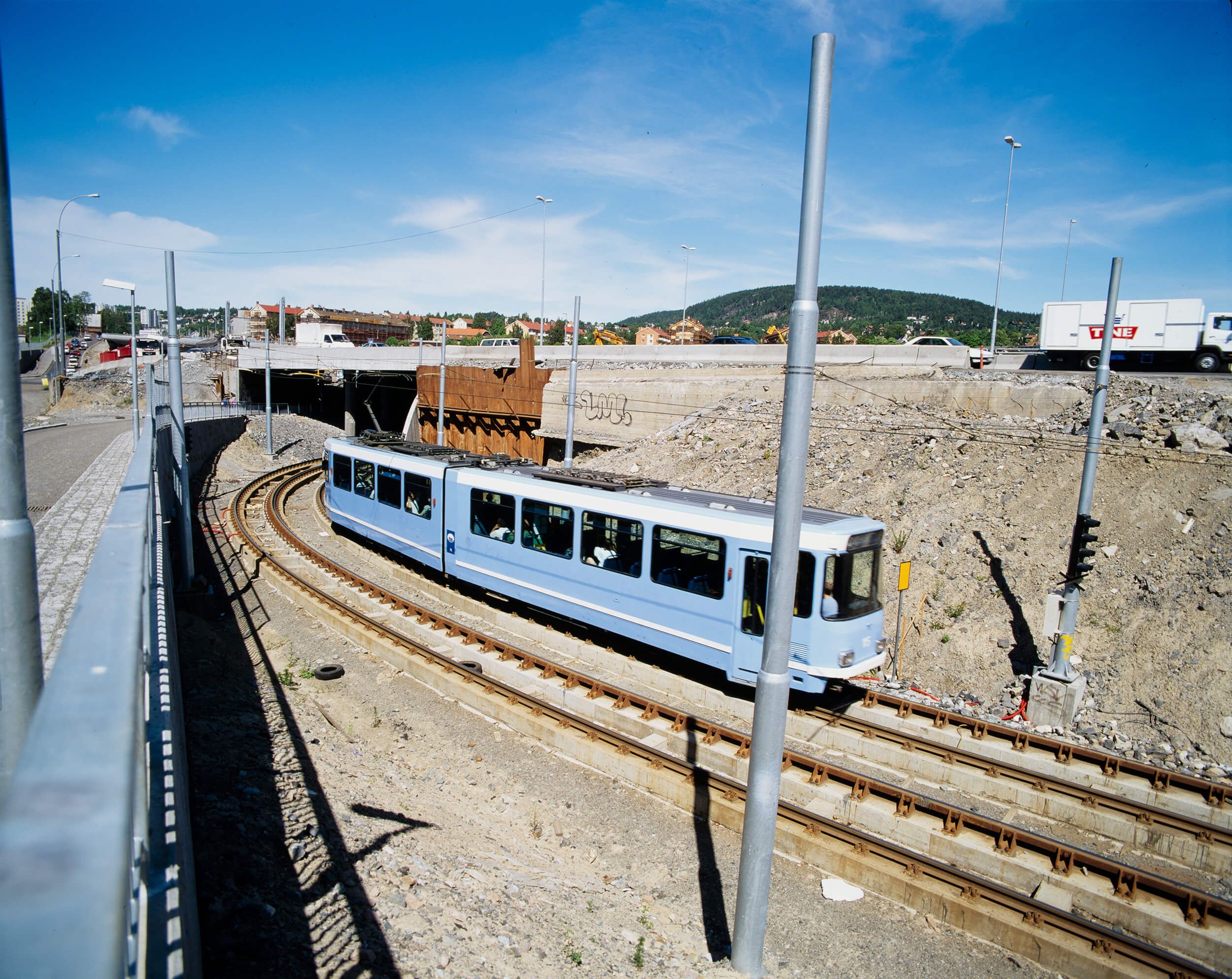
The tram track was laid under the Sinsenkrysset intersection, 1991.
Photo: Unknown / NTM
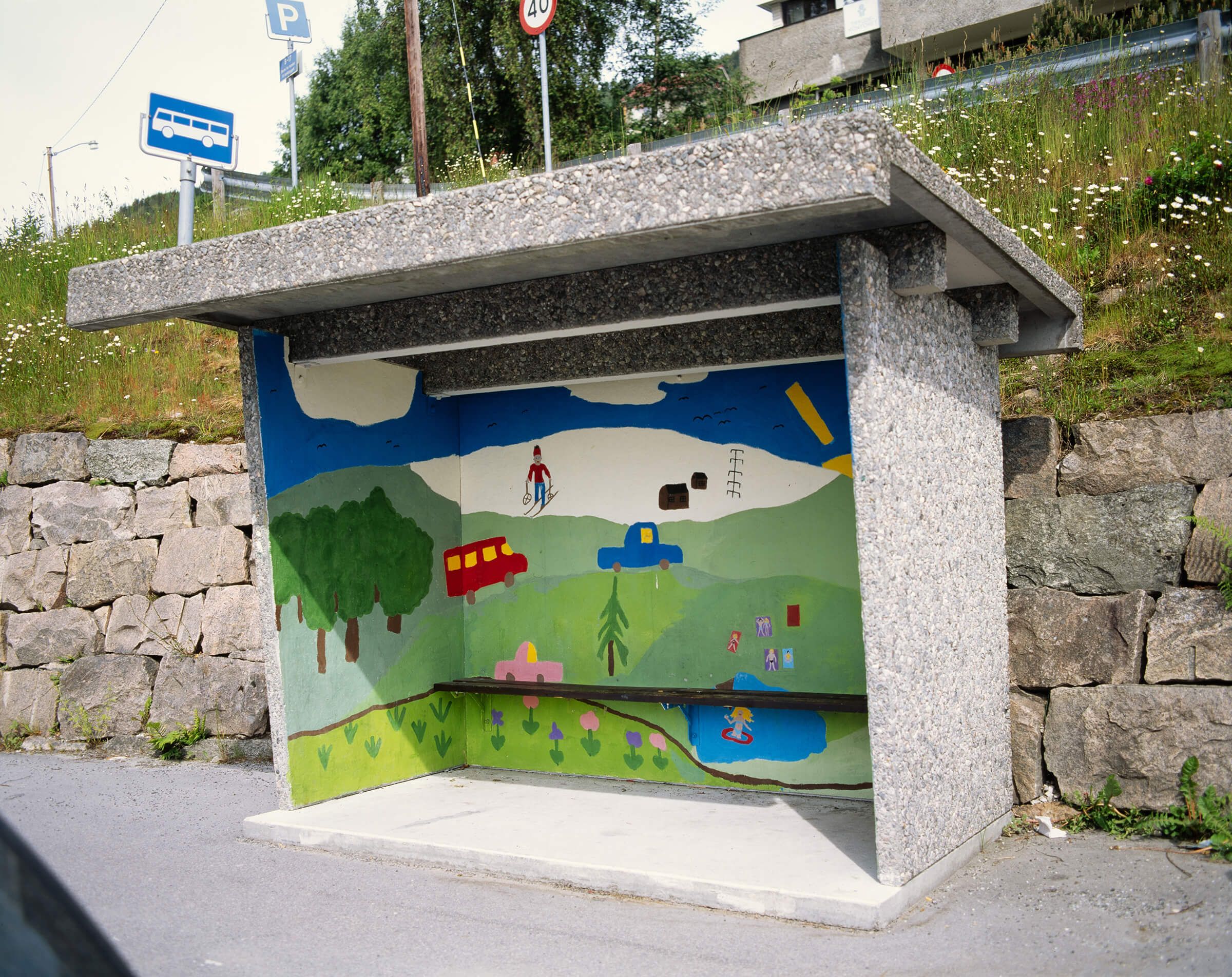
Important but forgotten? What would we do without the waiting sheds!
Photo: Unknown / NTM
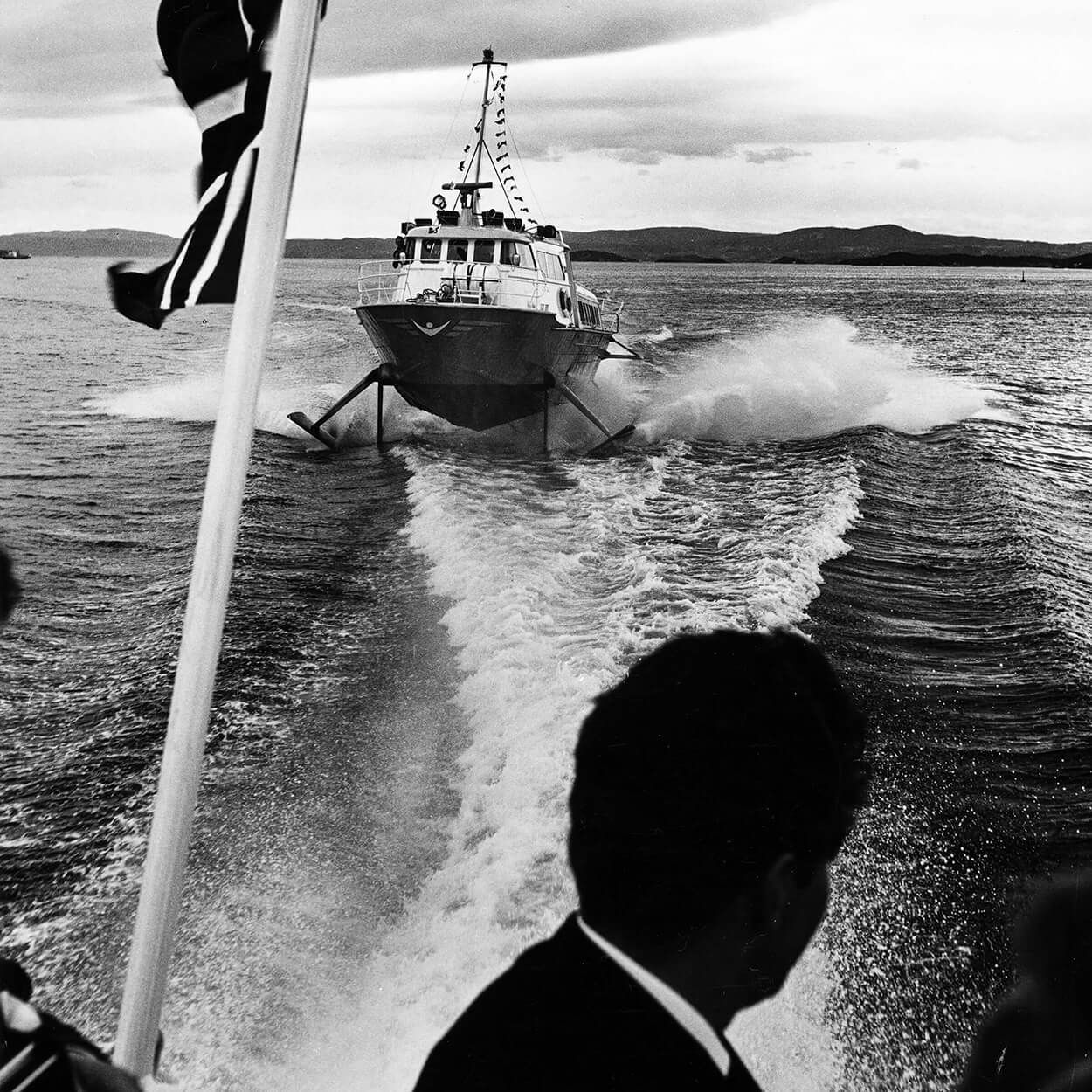
In 1964, hydrofoil boats were put into service on the Oslo Fjord.
Photo: P. Røstad / Dextra

In 1964, fast hydrofoils were introduced into the Oslo Fjord.
Photo: P. Røstad / Dextra

Fjord ferries in Oslo harbor, 1977.
Photo: P. Røstad / Dextra

MS Lykkeper operated the Oslo - Nesodden route from 1969 to 1989.
Photo: P. Røstad / Dextra
PEOPLE
Public transport is about people – those who travel, those who drive trolleys and buses safely, and those who plan, build and control the system.
The first suburban railway, the Holmenkollbanen from 1898, had as its main purpose to transport people out into the countryside for summer trips and winter sports. It still does so, to places such as Sognsvann, Skullerud and Frognerseteren. The field hospitals and sea baths were practical health measures, and public investment in the railway was of great benefit. In the summer, the ferries were filled with people going out for swimming and amusements, connecting Oslo's inhabitants to nature and recreation.
However, the encounter between people and traffic can still be challenging. Accidents and derailments have unfortunately occurred, despite careful planning and safety work. Nevertheless, public transport shows how an efficient transport network connects the city, enables activity and gives people access to both work, leisure and nature in a safe and predictable way.

Soft and hard road users at Torggata and the Cathedral, 1975.
Photo: Knudsens / Dextra

Ingierstrand Bath, 1964.
Photo: P. Røstad / Dextra

Construction between the Storting and the National Theatre took place from 1977 to 1987.
Photo: Knudsens / Dextra

Laying tram tracks in Akersgata, 1899.
Photo: Unknown / NTM

Stone setters at the tram line in Trondheimsveien, 1920s.
Photo: Unknown / NTM

Train conductors in the control room, 1980.
Photo: Knudsens / Dextra

Tram 216 from Storgata to Majorstua via Stortorvet and Homannsbyen.
Photo: Knudsens / Dextra

Ticket booths at Jernbanetorget metro station, 1970.
Photo: Knudsens / Dextra

Tram 112 type SL79 on its way from Drammensveien to Kjelsås, 1990.
Photo: O. Væring

Bus stop at Klingenberg, 1976.
Photo: P. Røstad / Dextra
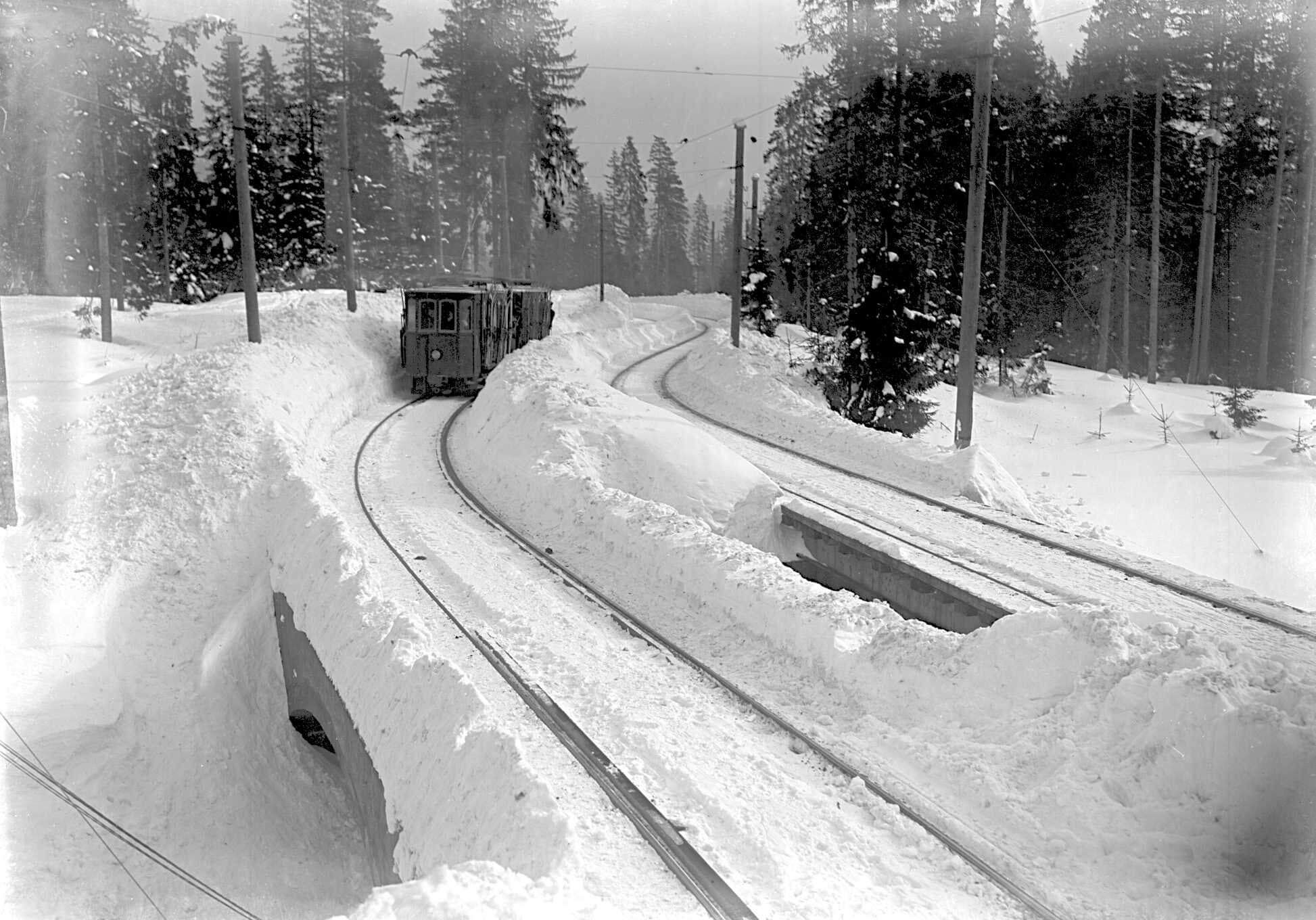
The Holmenkollbanen in Oslo in winter, at Holmenkollen station.
Photo: Unknown / NTM
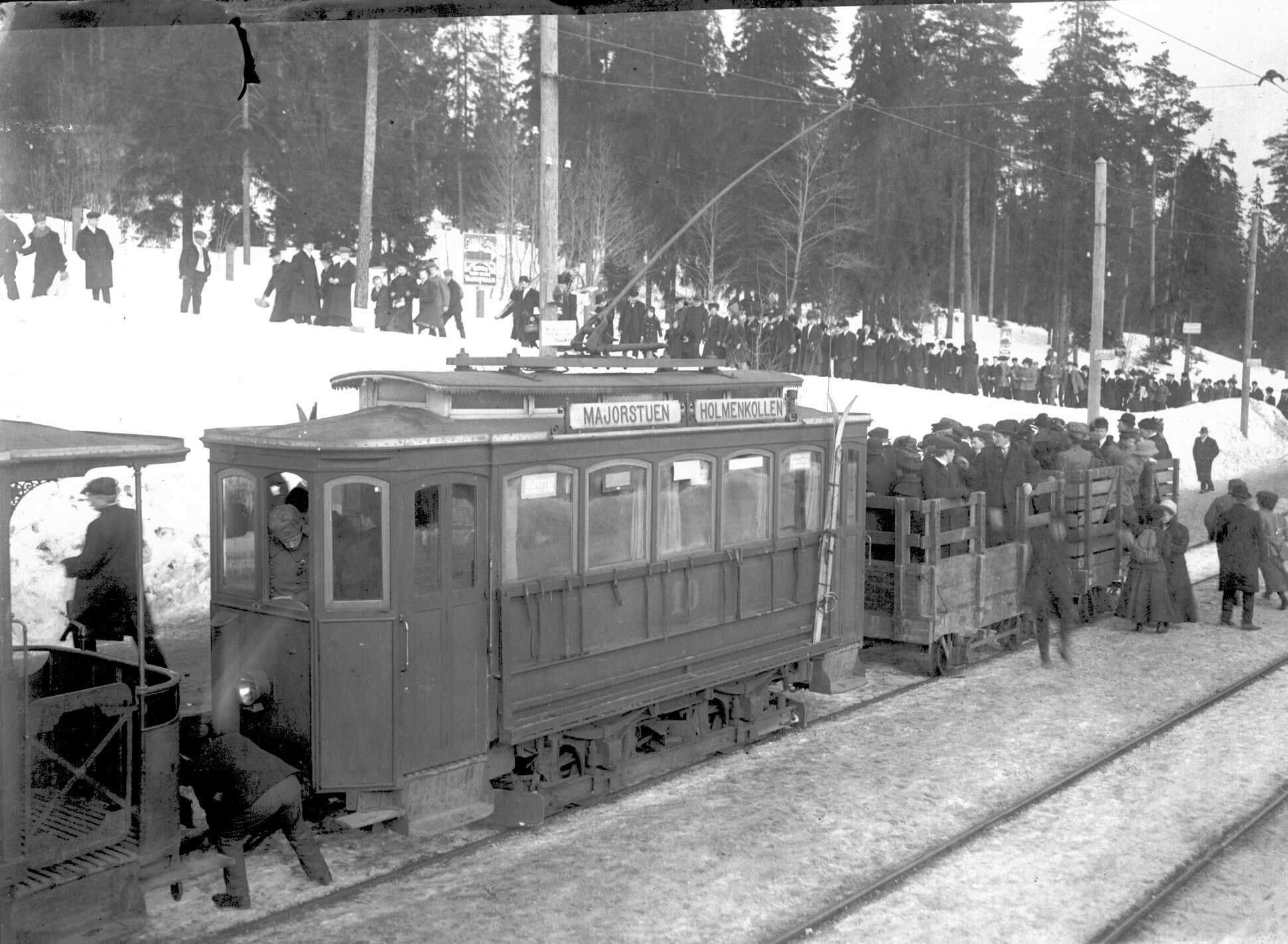
Winter excursion to Holmenkollen station.
Photo: Unknown / NTM

Open wagons used on the busiest Holmenkoll days, 1900.
Photo: Unknown / NTM

Holmenkolbanen's carriage 5 from Siemens at Majorstuen, 1900.
Photo: Unknown / NTM

Holmenkollen station on a busy ski day, with motor car 503.
Photo: Knudsens / Dextra

Ingierstrand Bath, 1964.
Photo: P. Røstad / Dextra

Ingierstrand Bath, 1953.
Photo: P. Røstad / Dextra

Ingierstrand Bath, 1964.
Photo: P. Røstad / Dextra
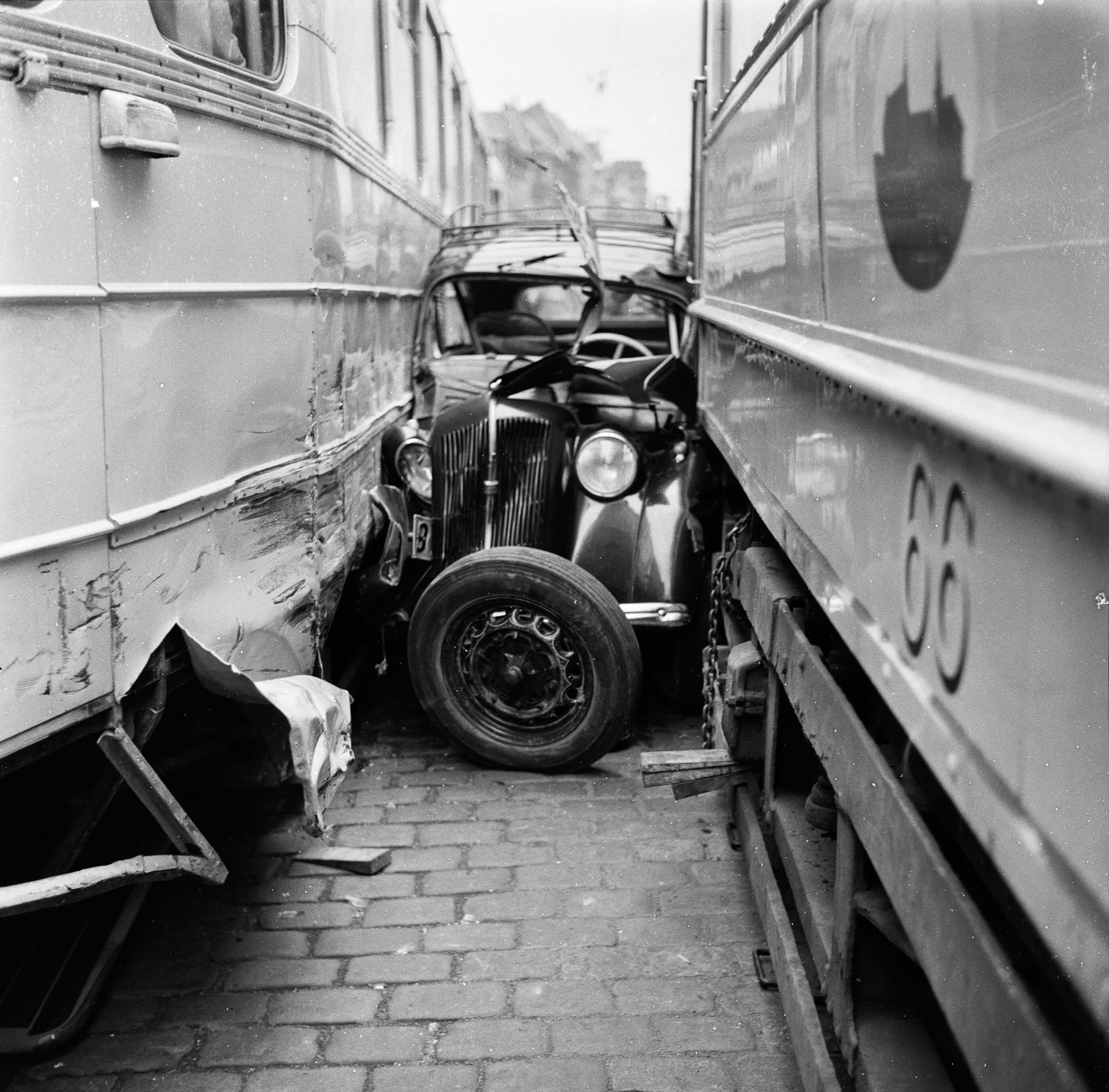
An accident where an Opel Kadett came between two trams in Storgata, 1955.
Photo: Knudsens / Dextra

Tram derailment at the Ekebergrestaurant, 1975.
Photo: Sohlberg / Dextra
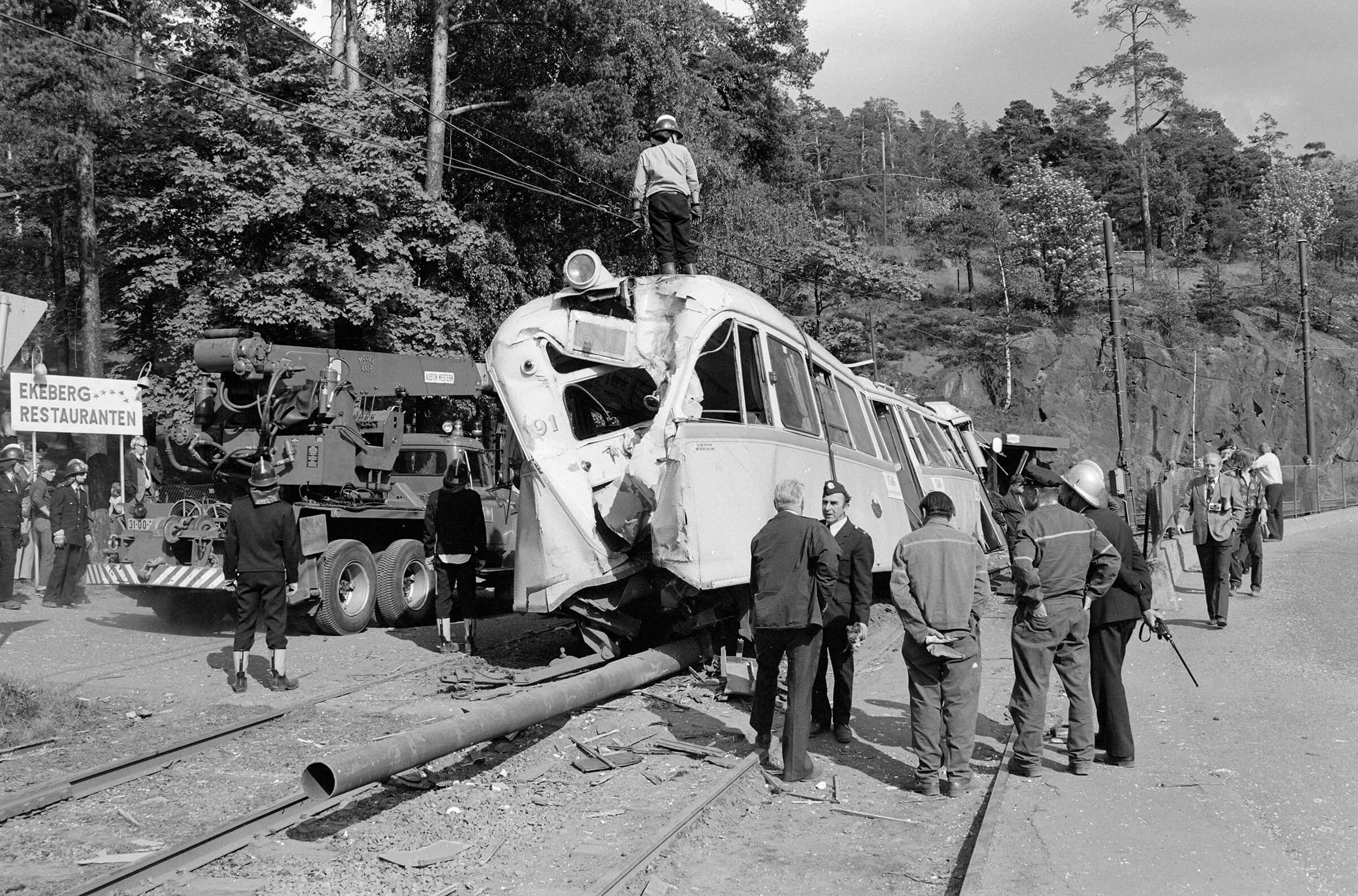
Policeman directing traffic at a derailment on Ekebergveien, 1975.
Photo: Sohlberg / Dextra
Video: Tram ride in Kristiana, Hans Berge Film




